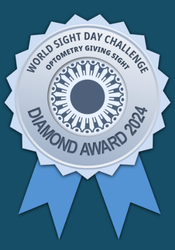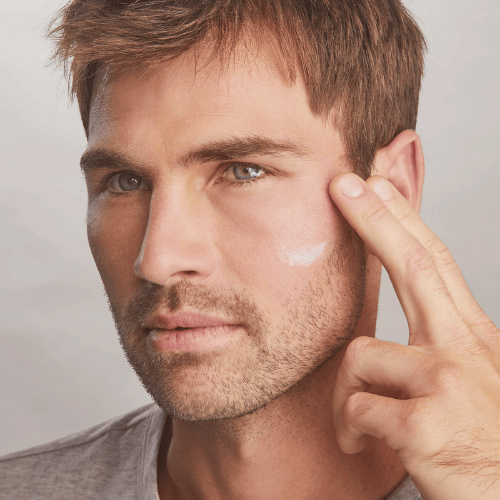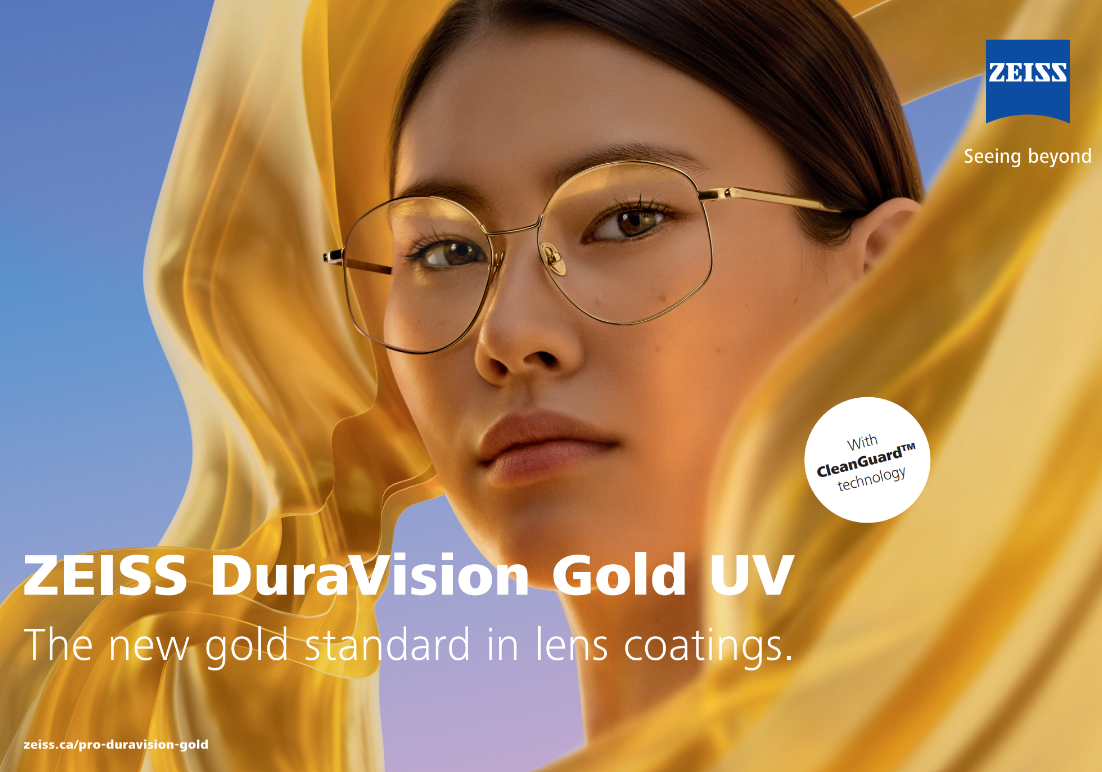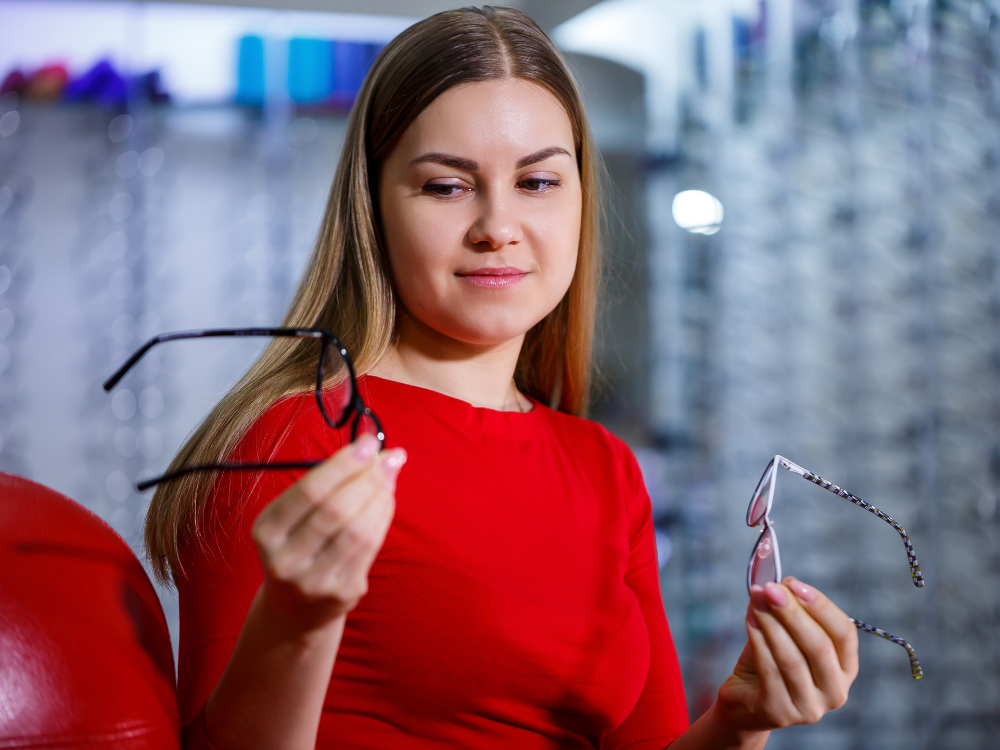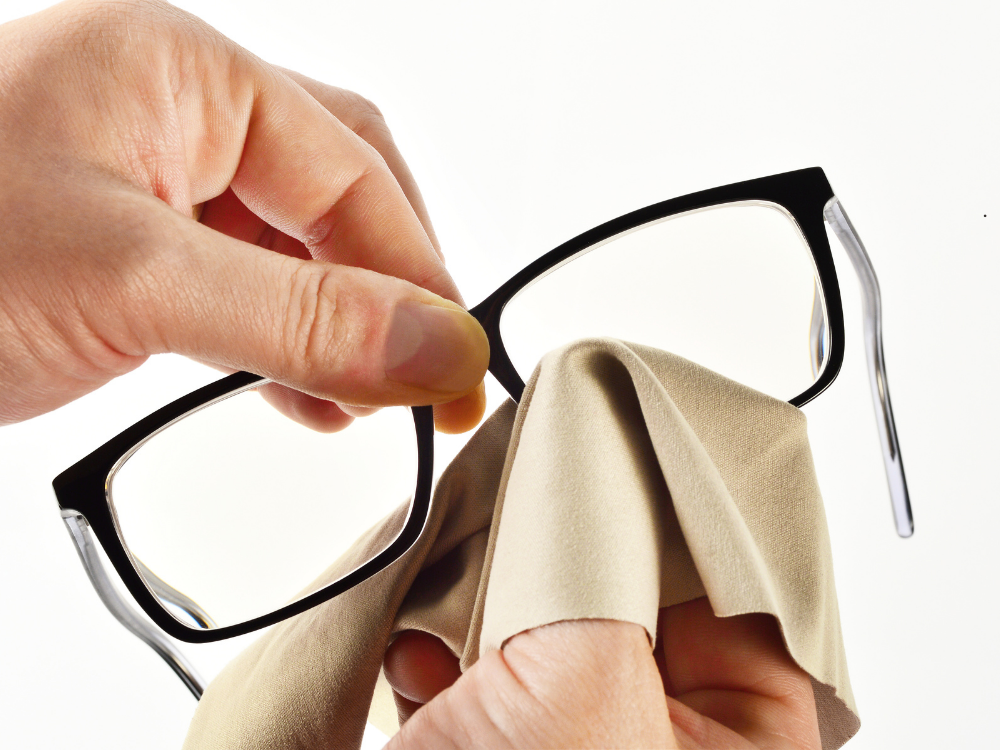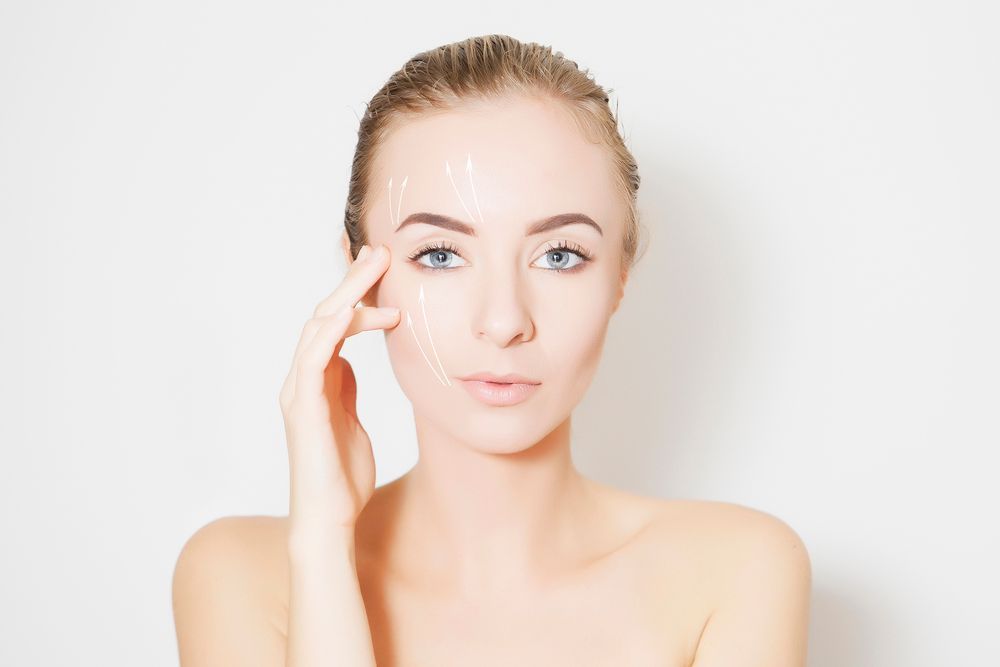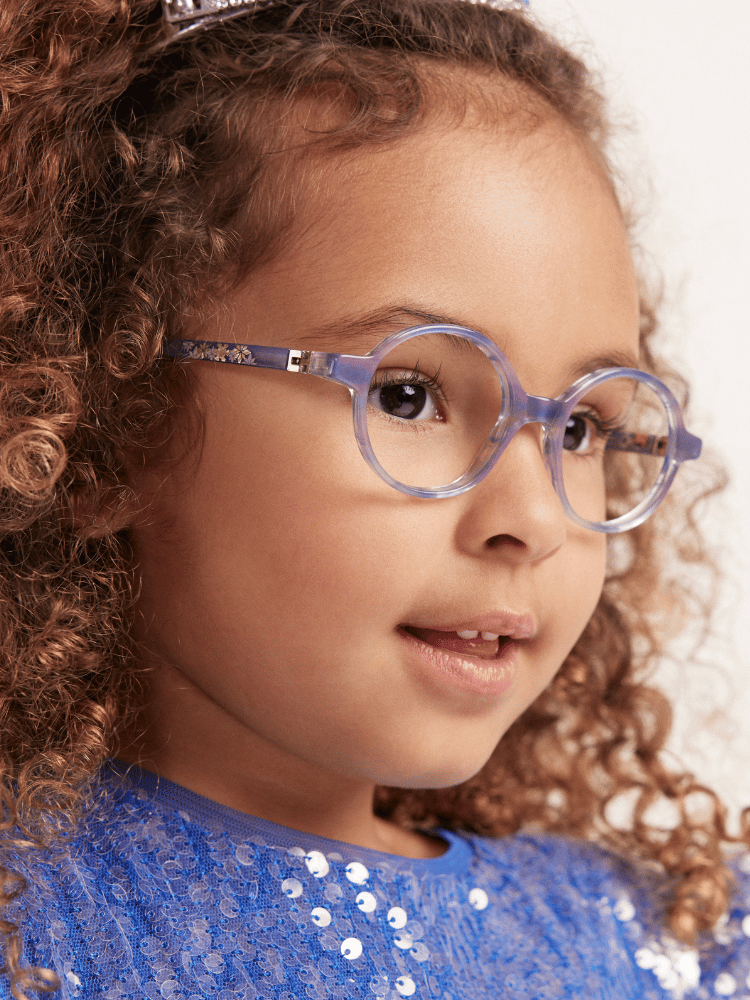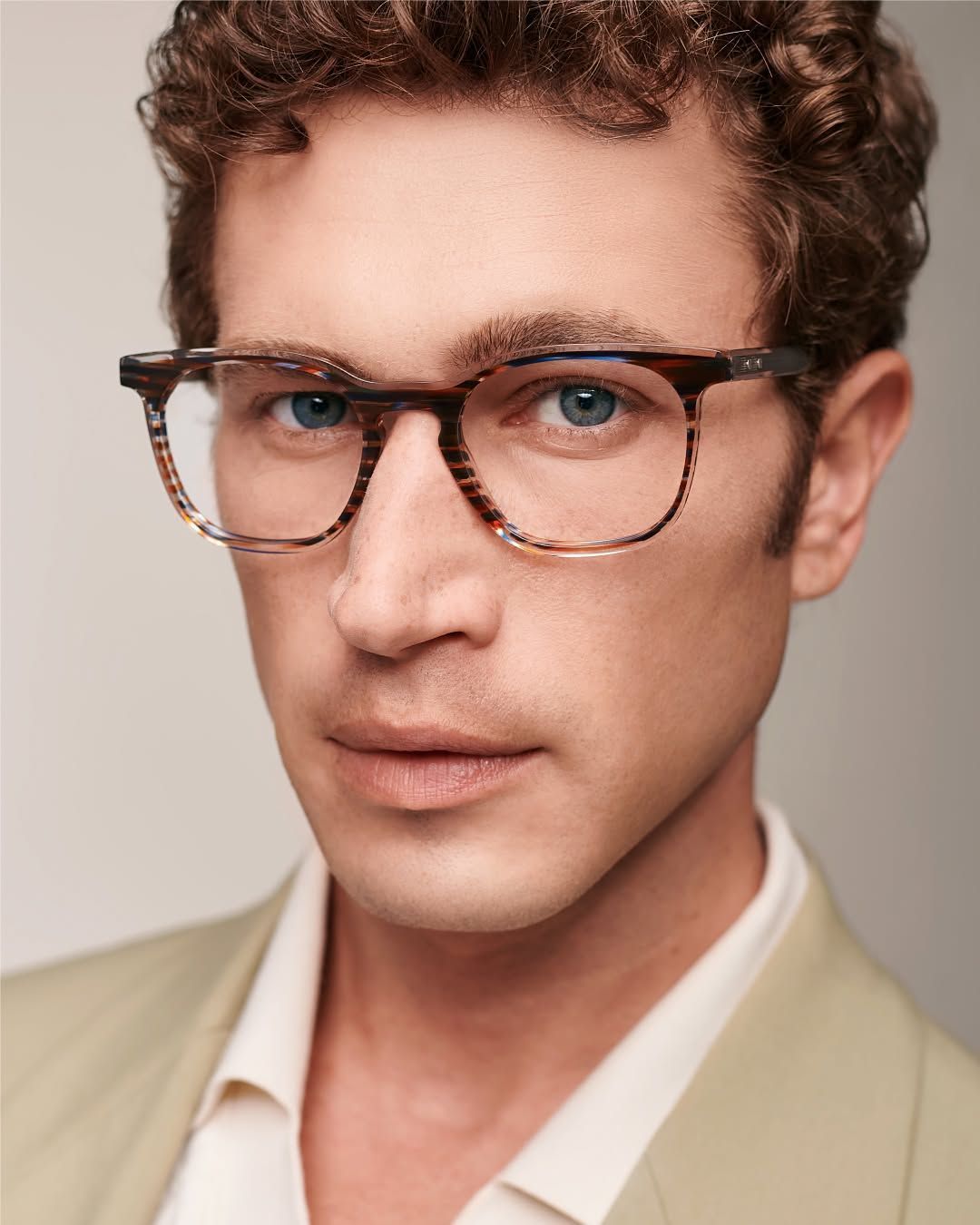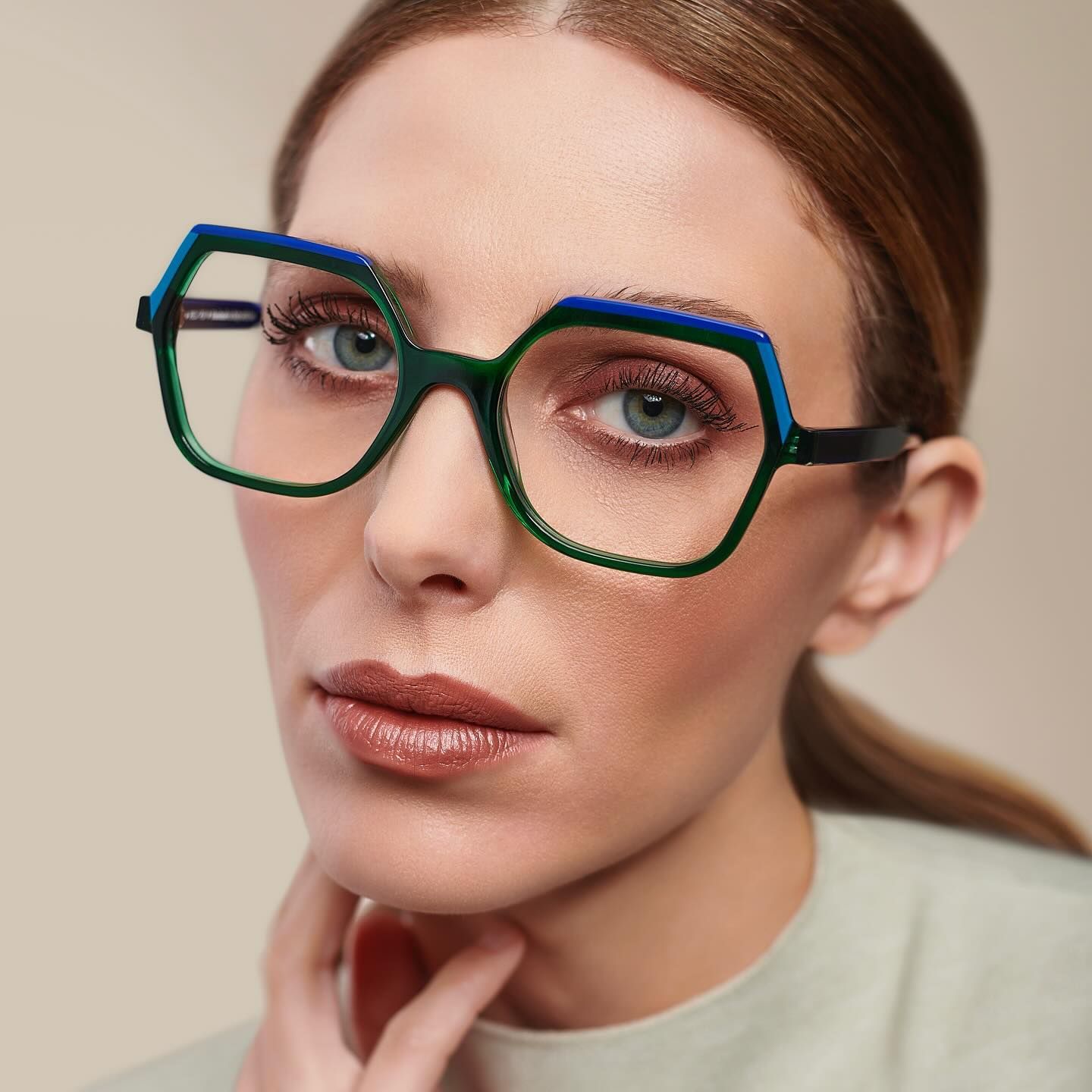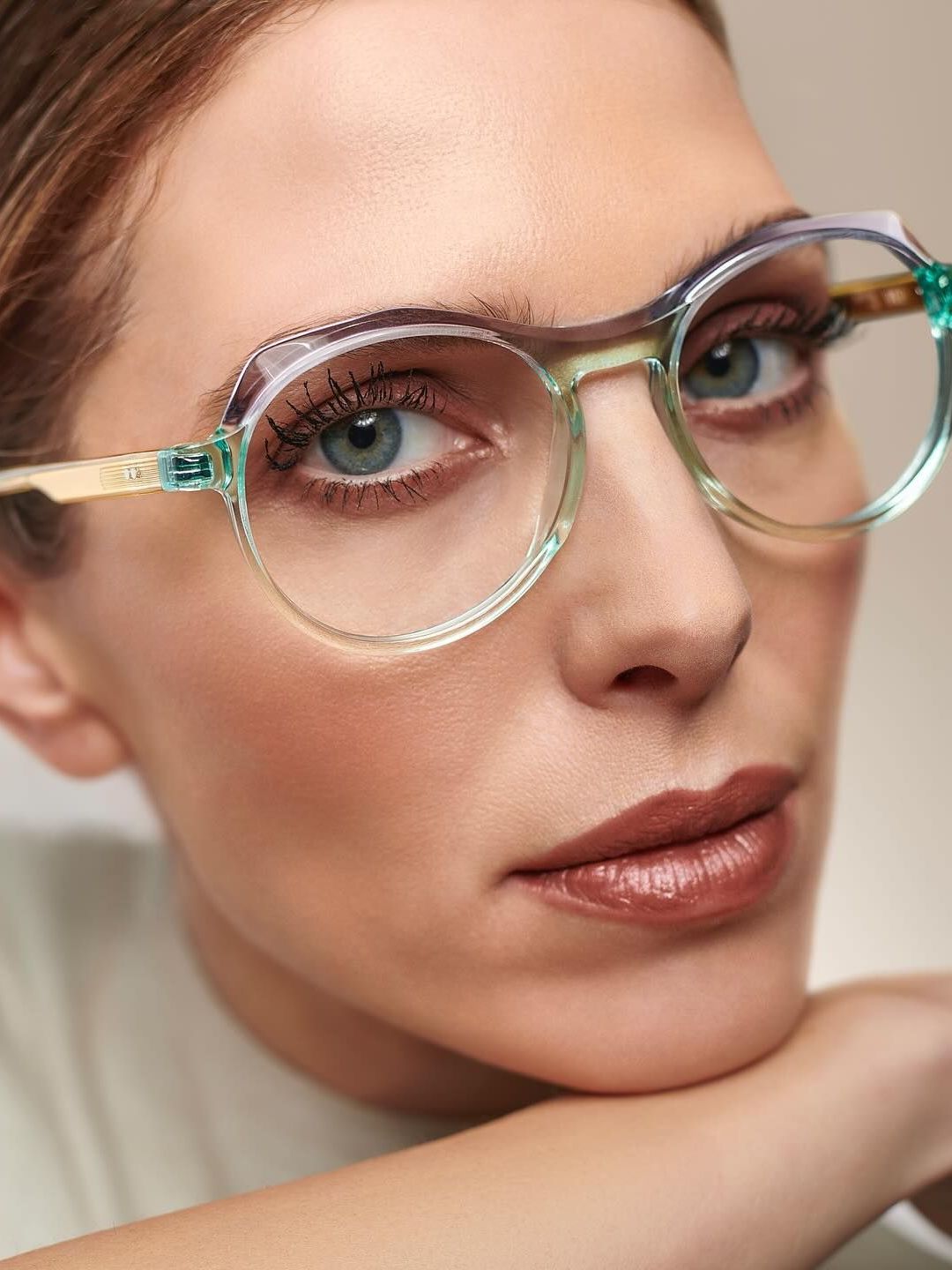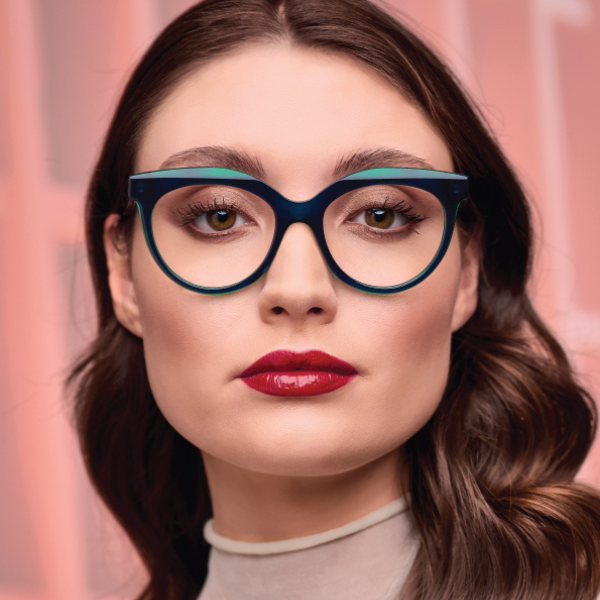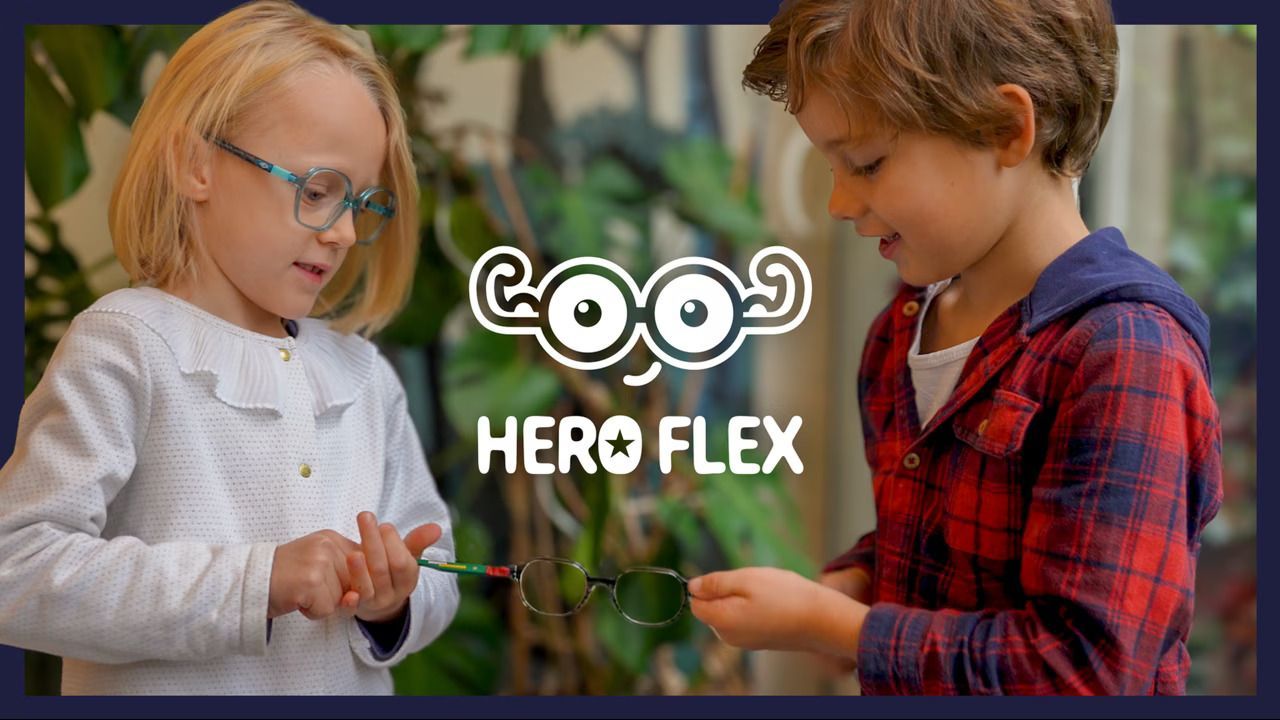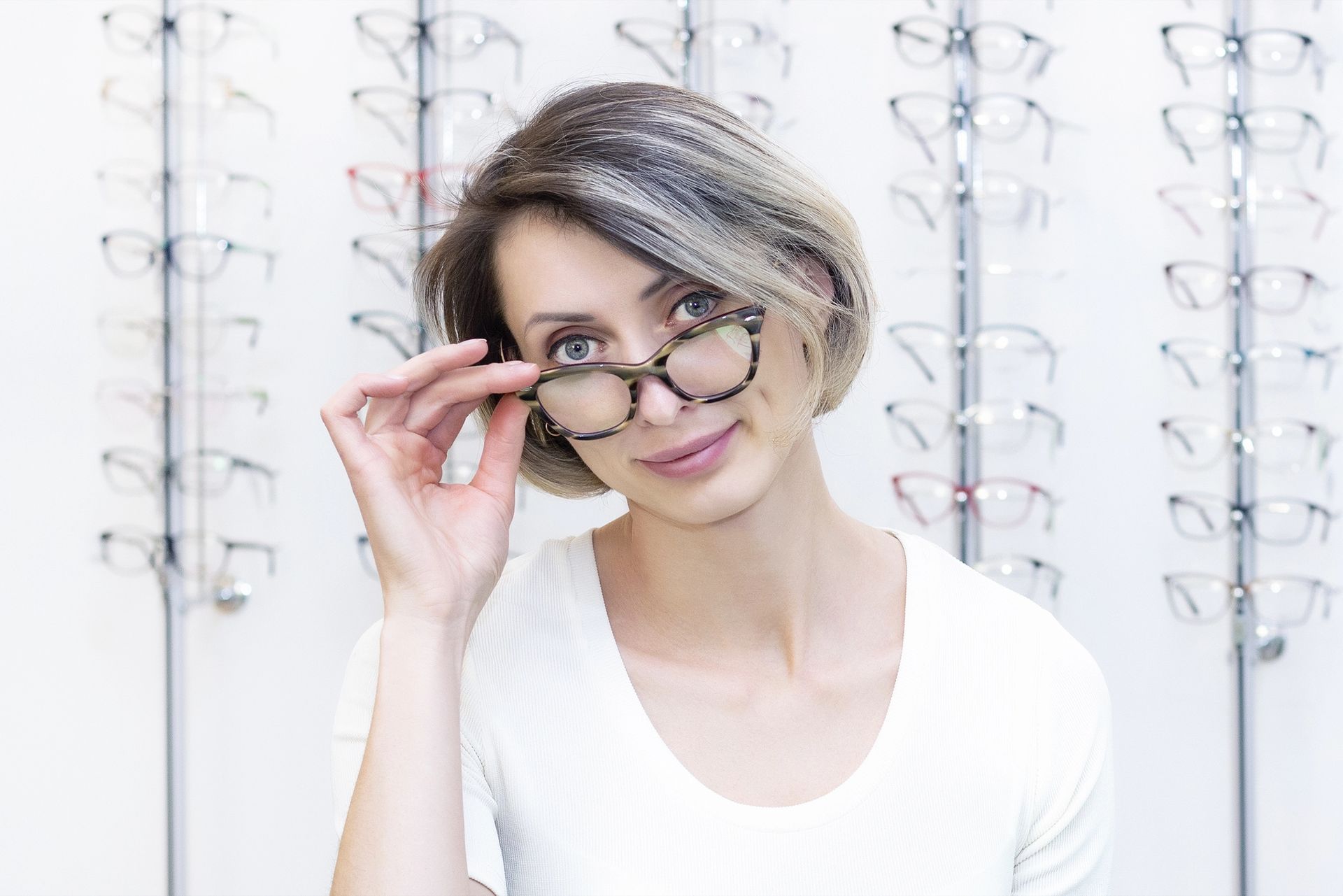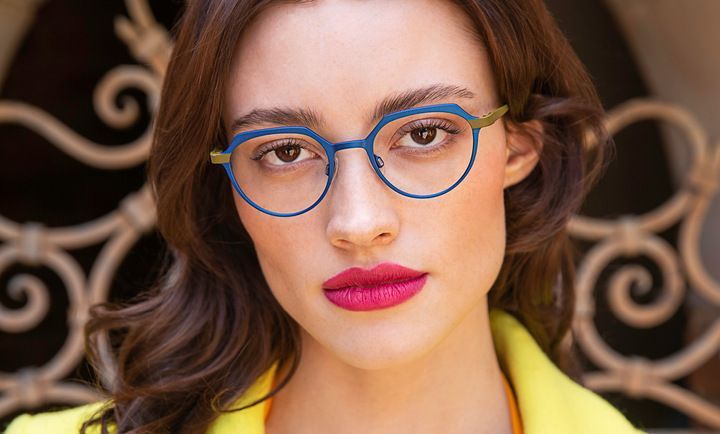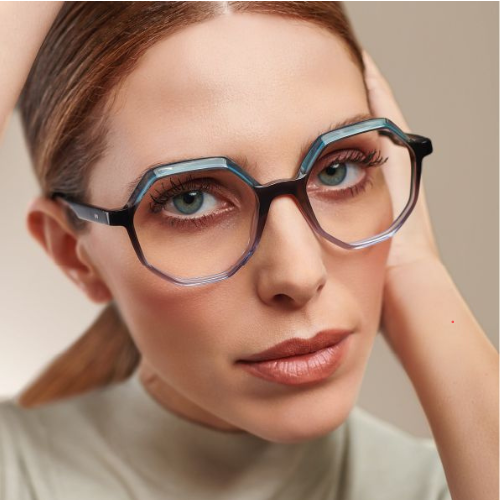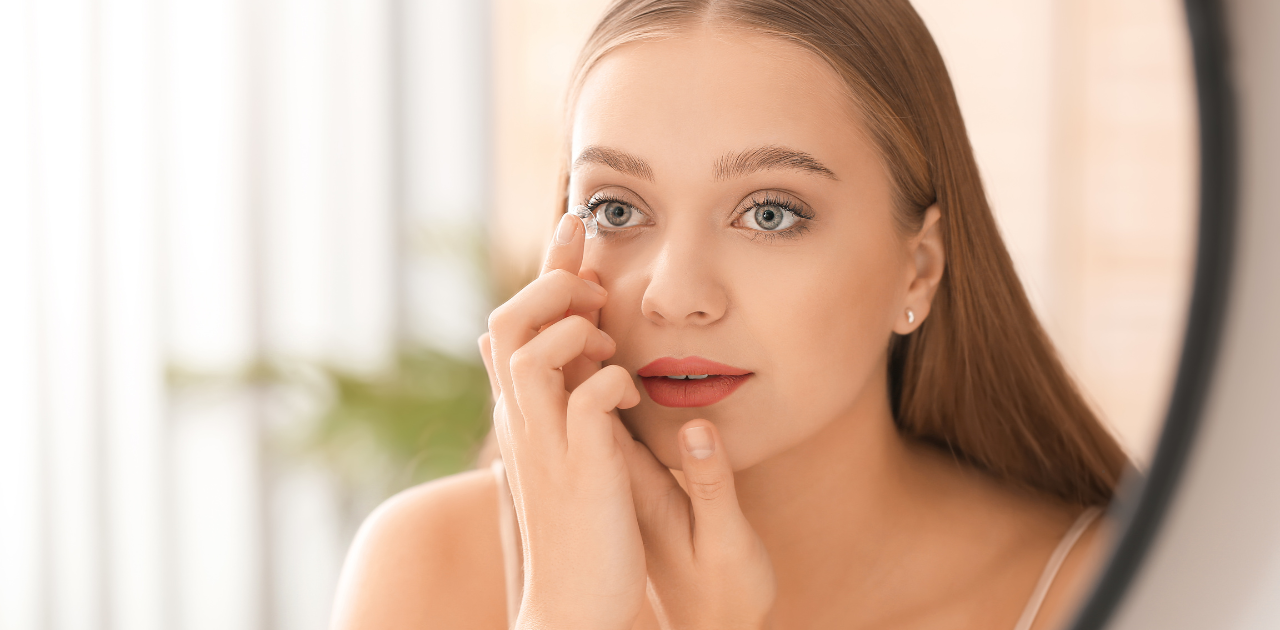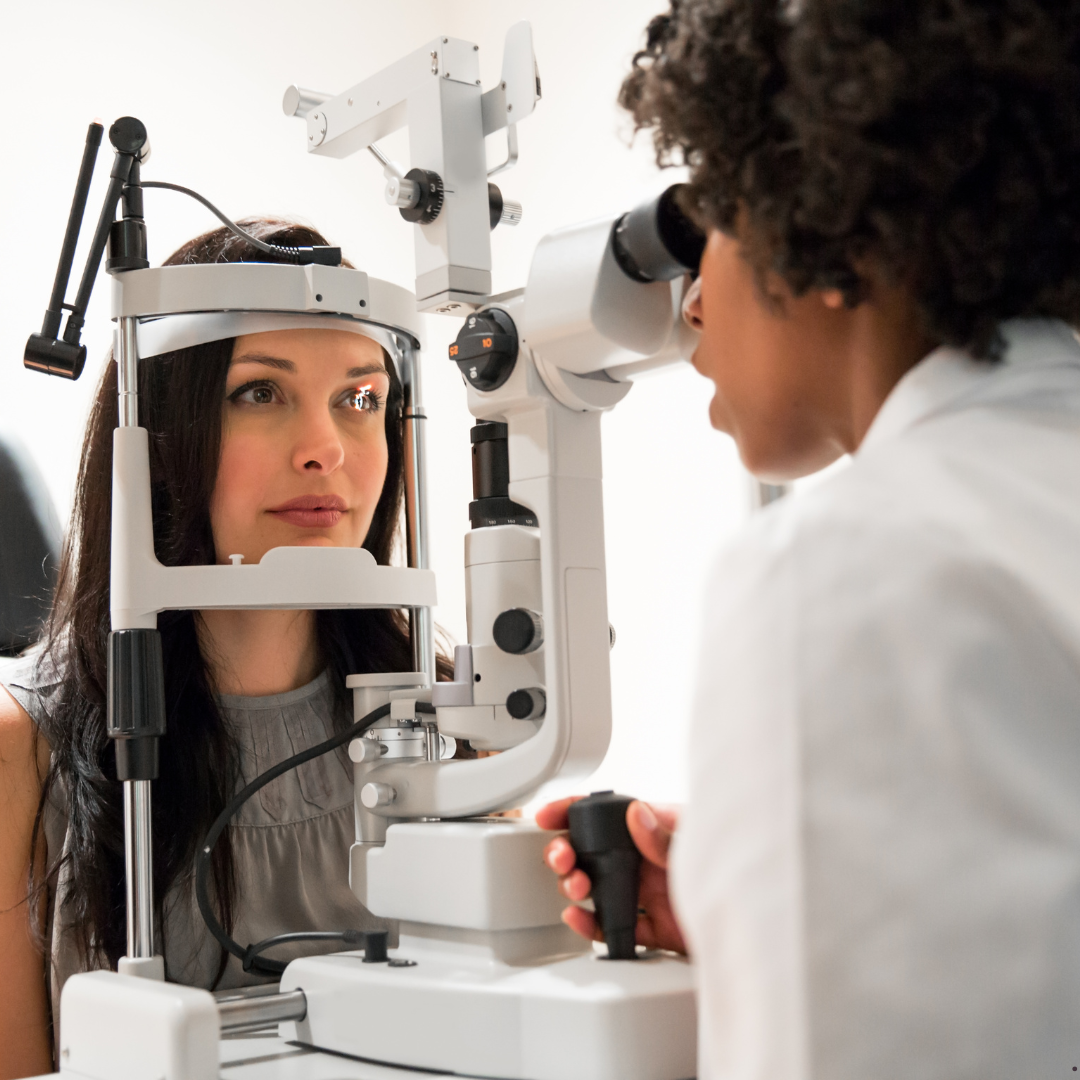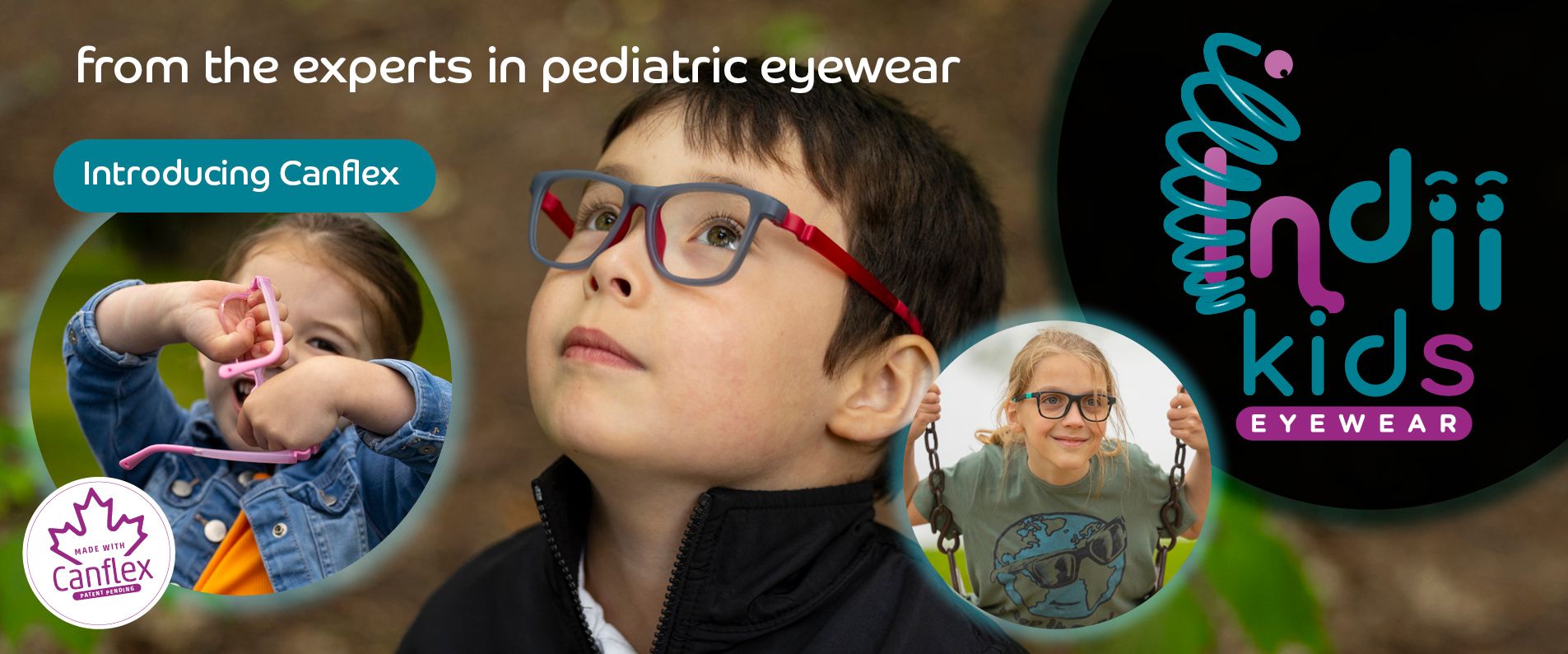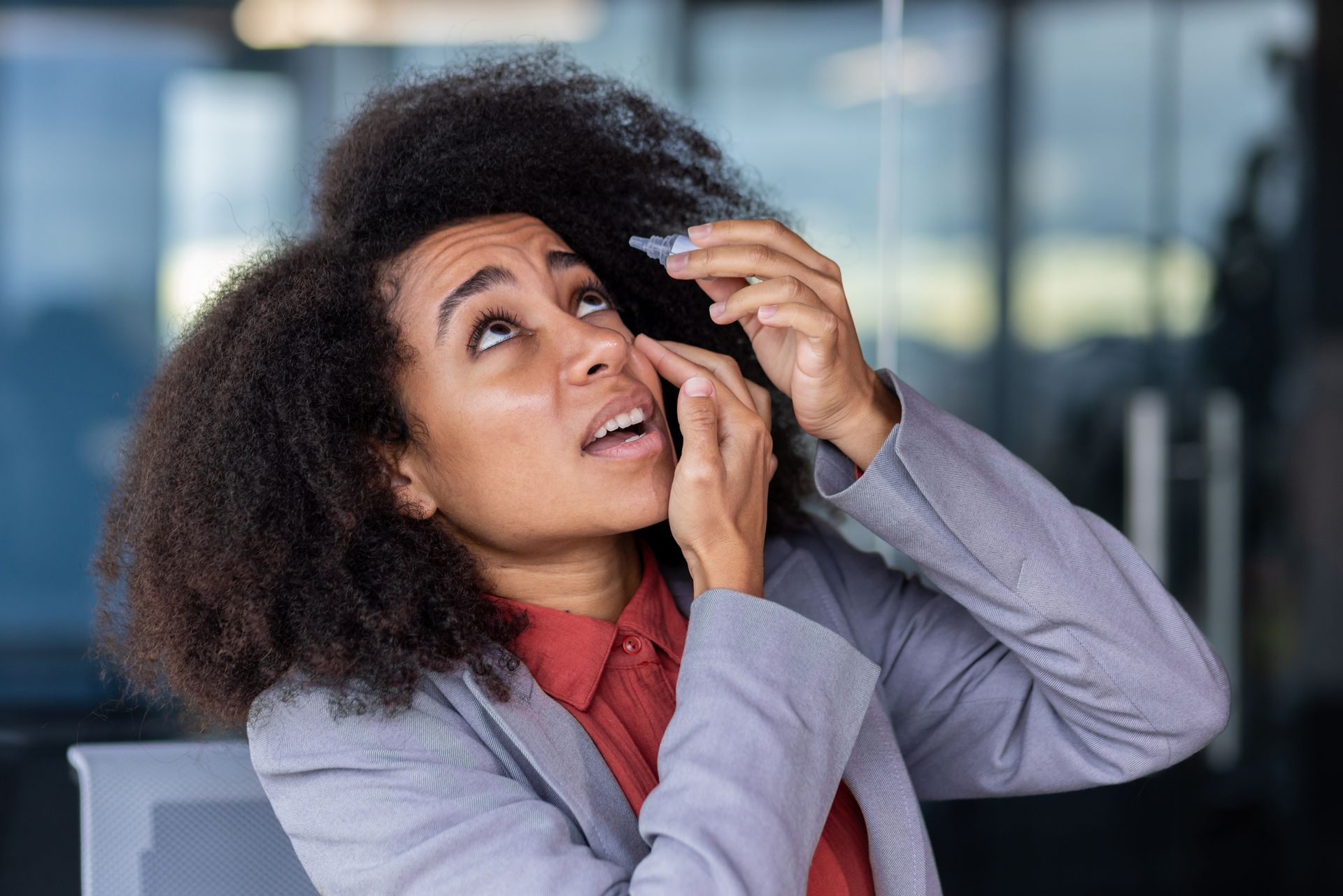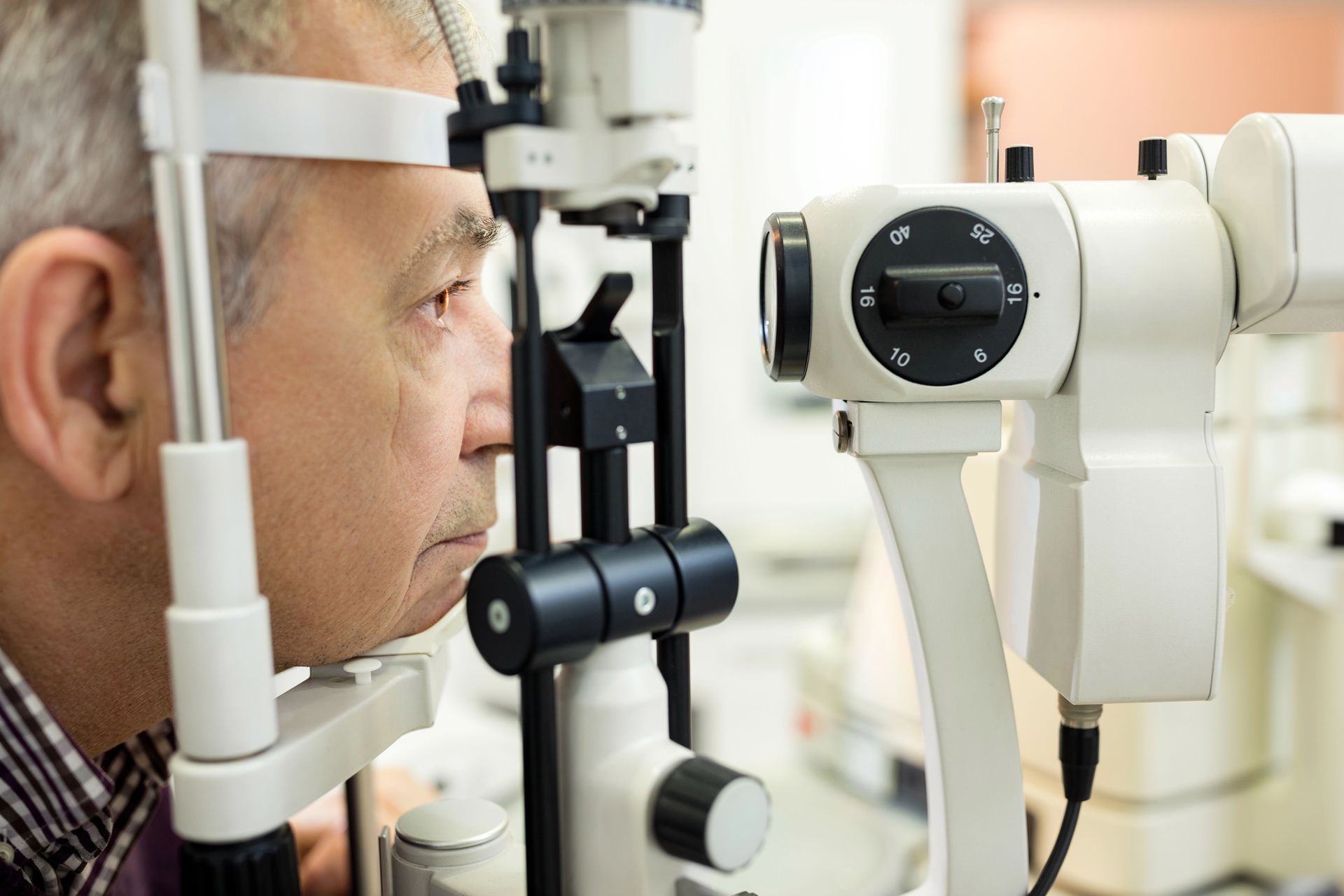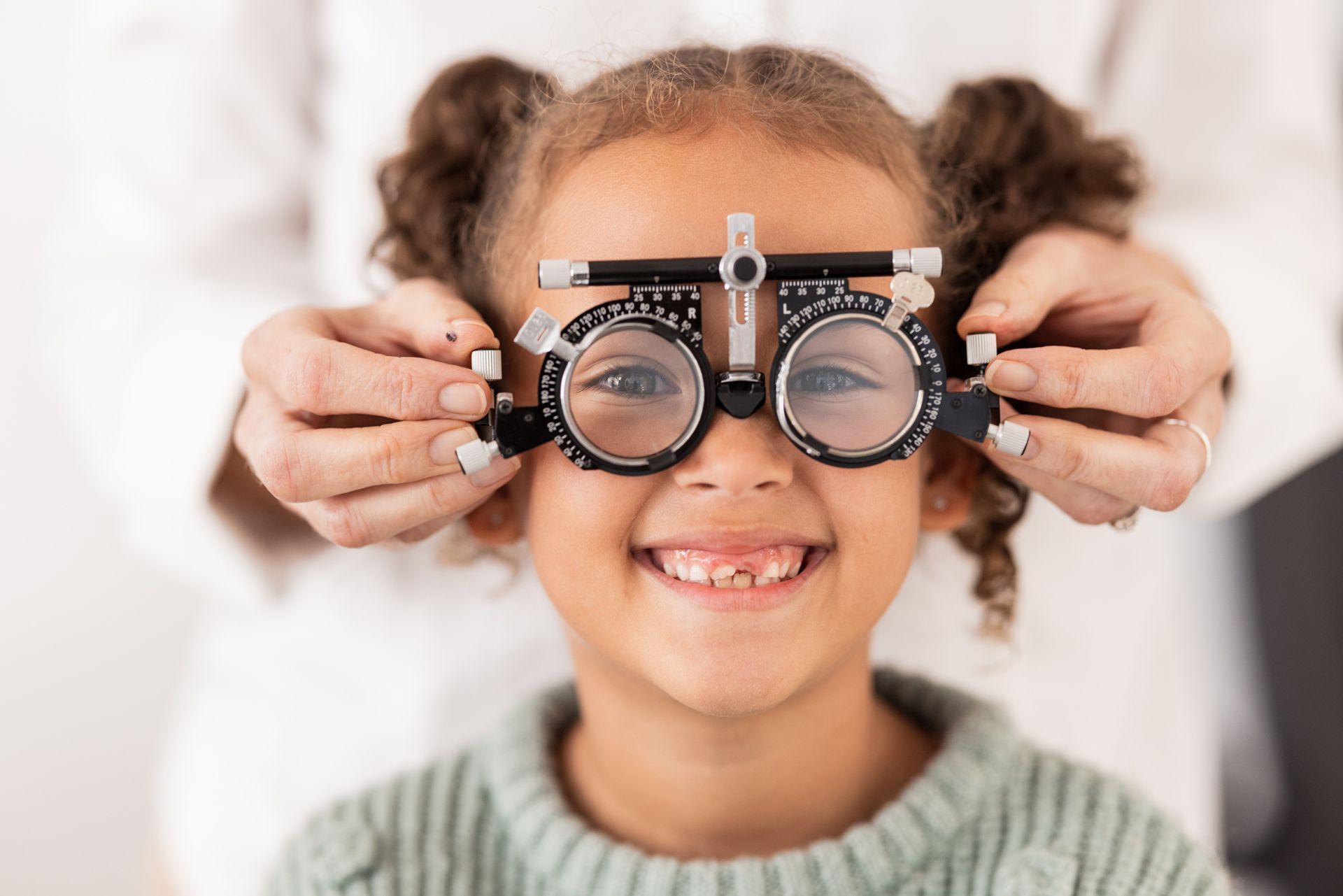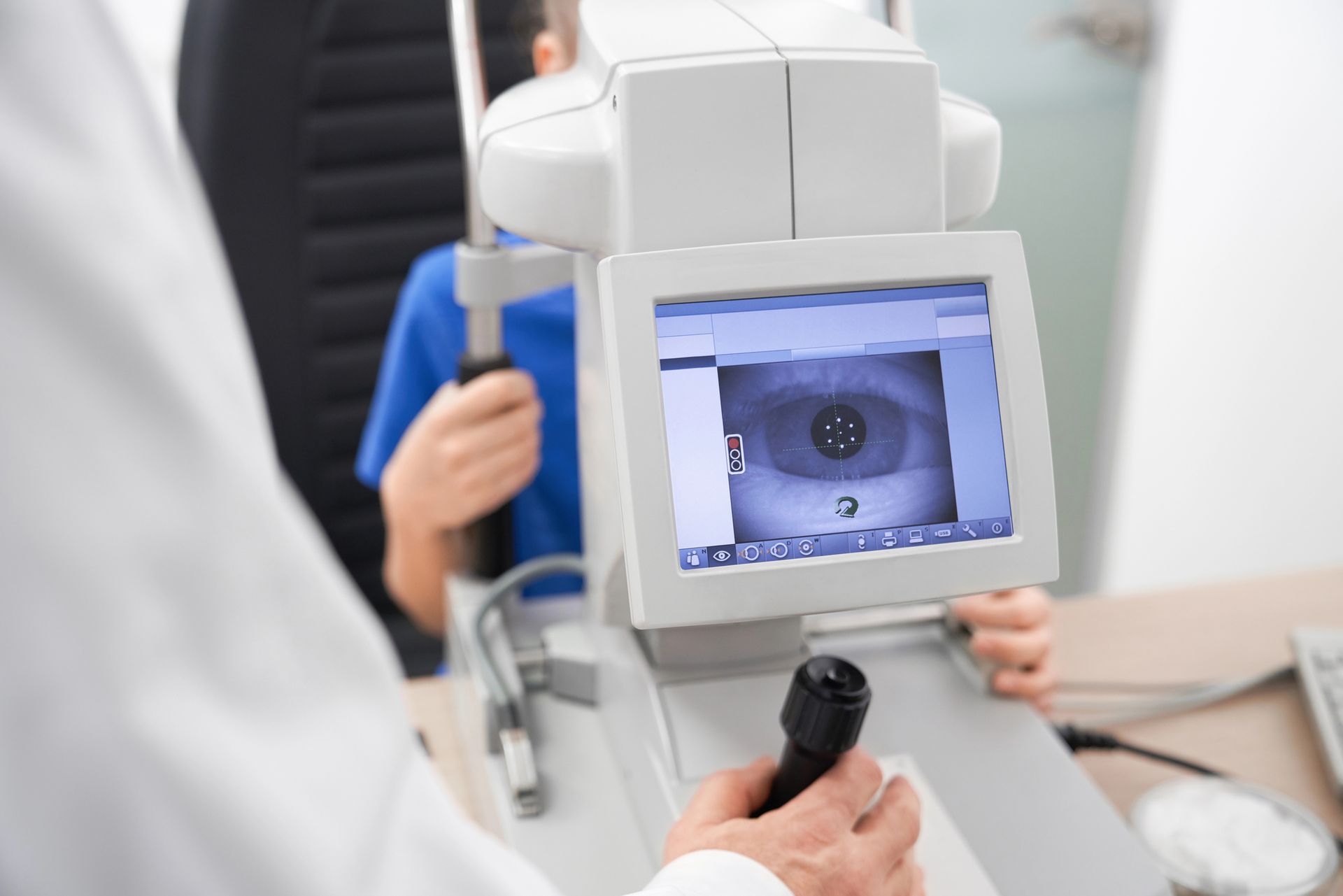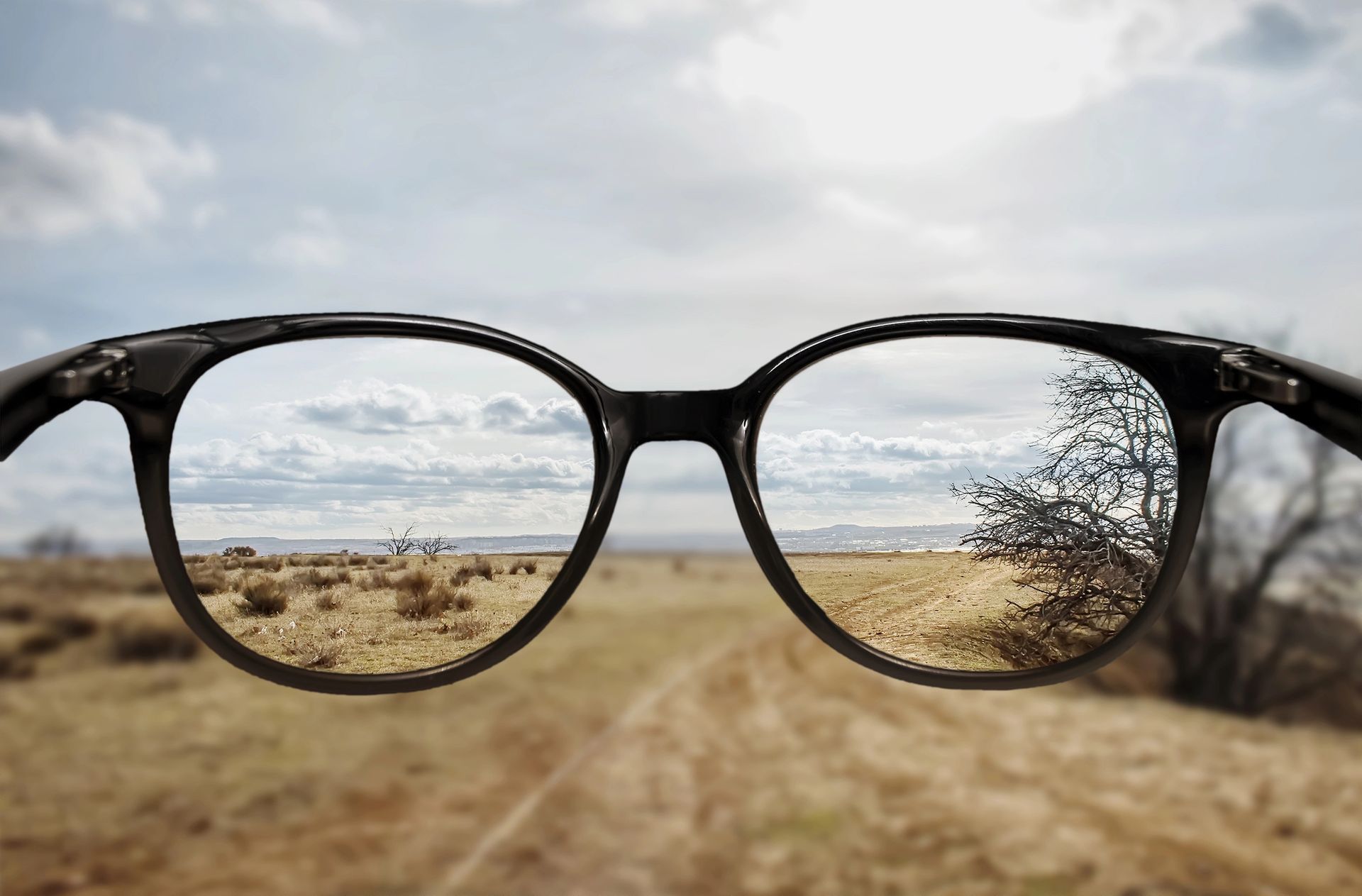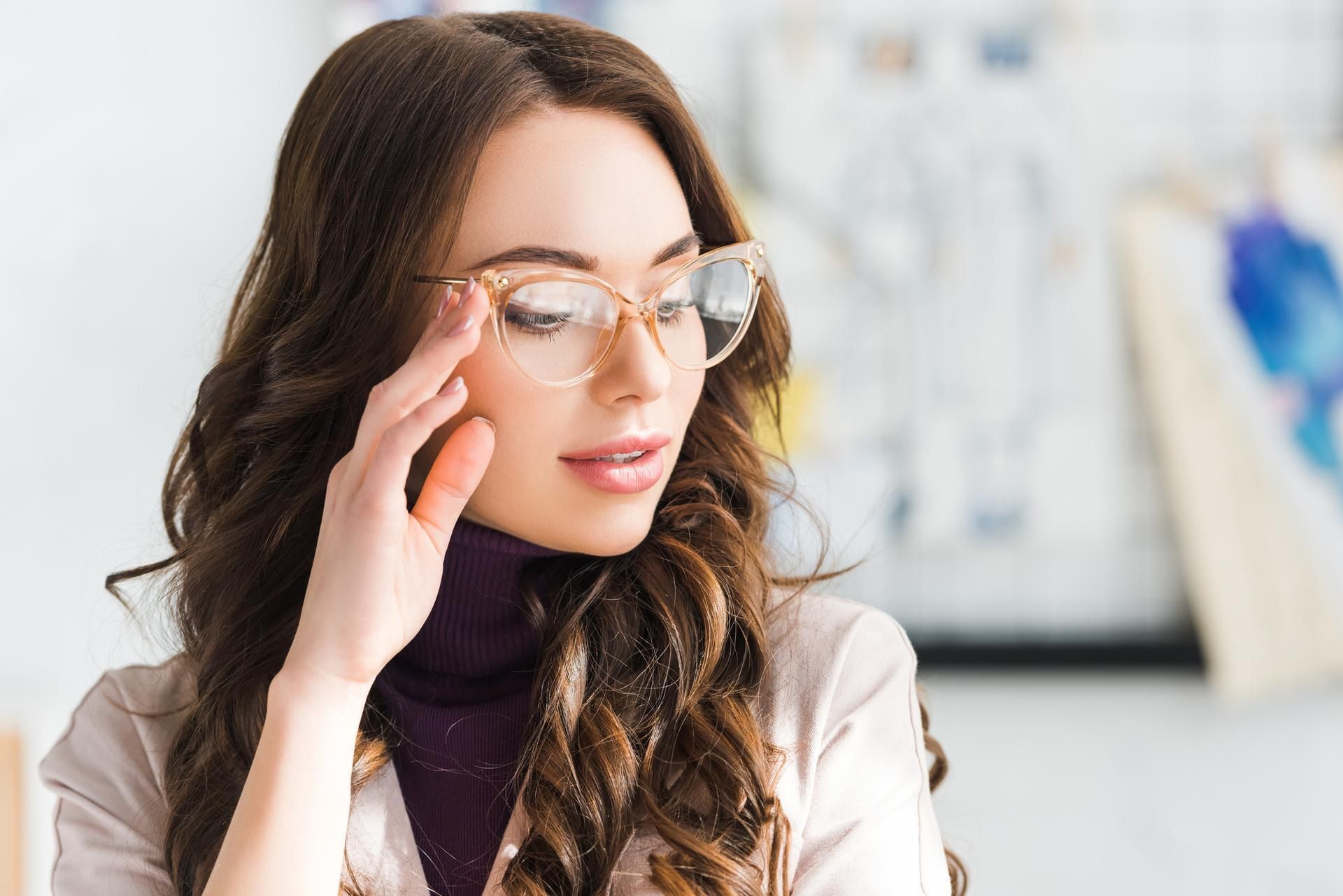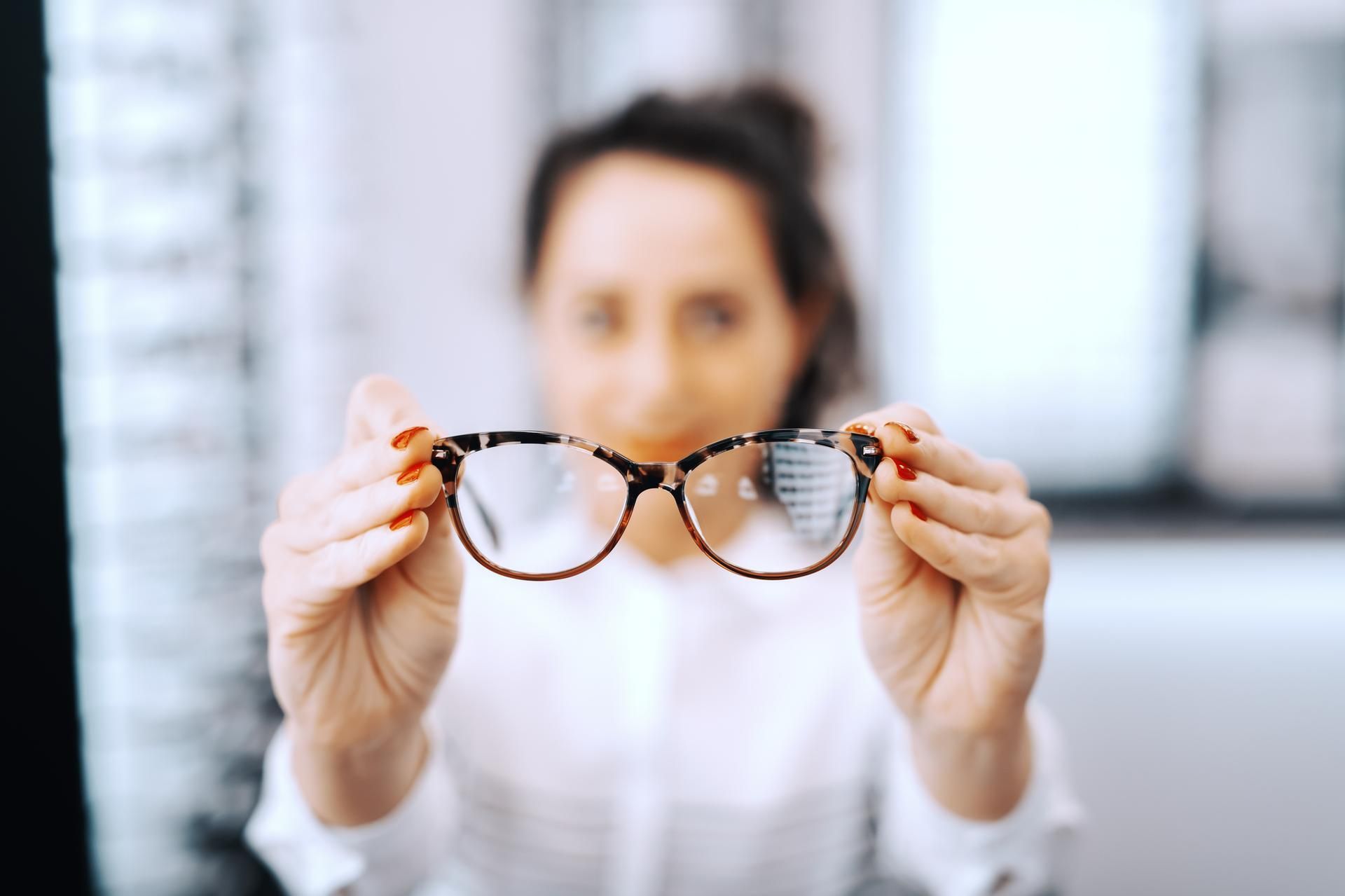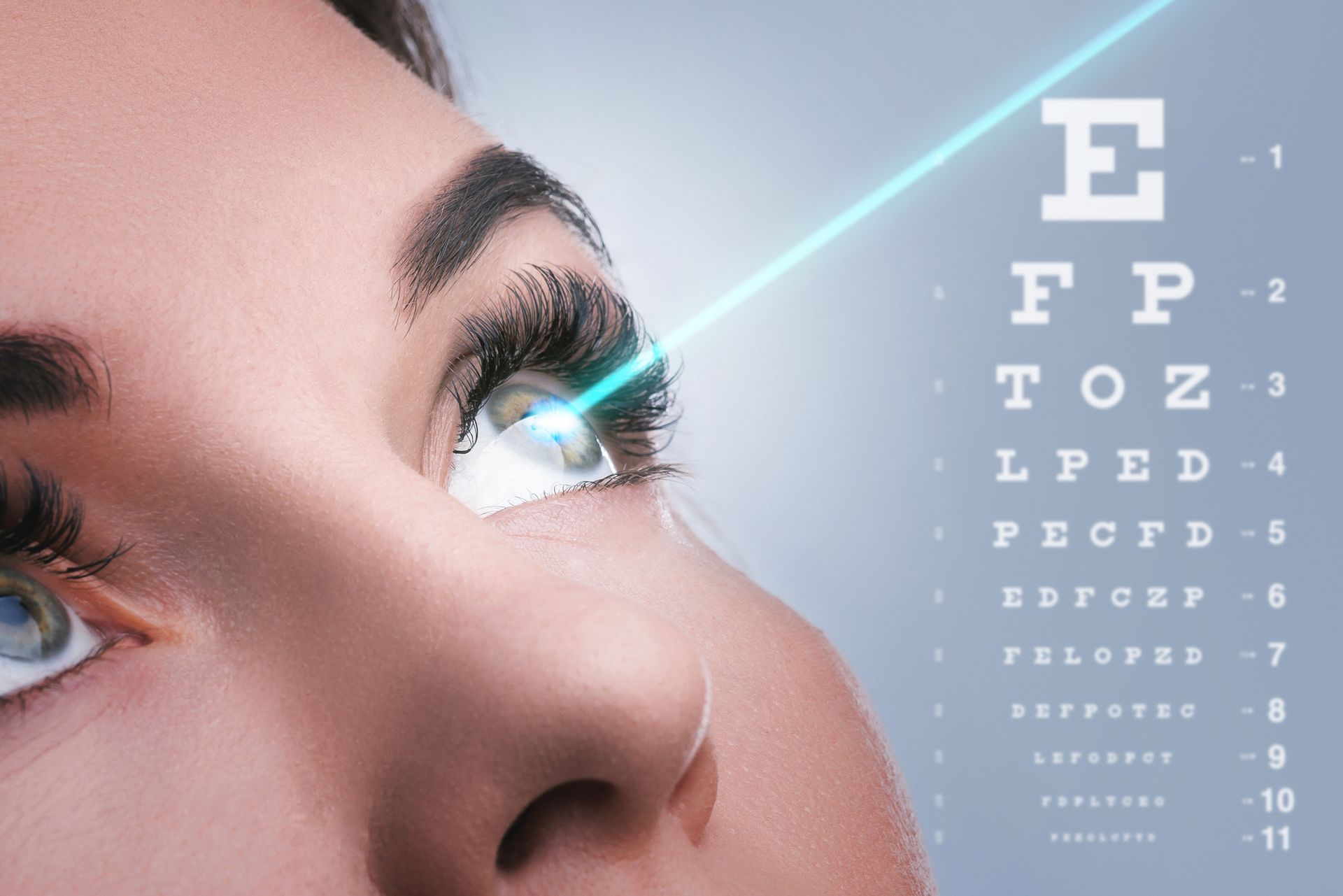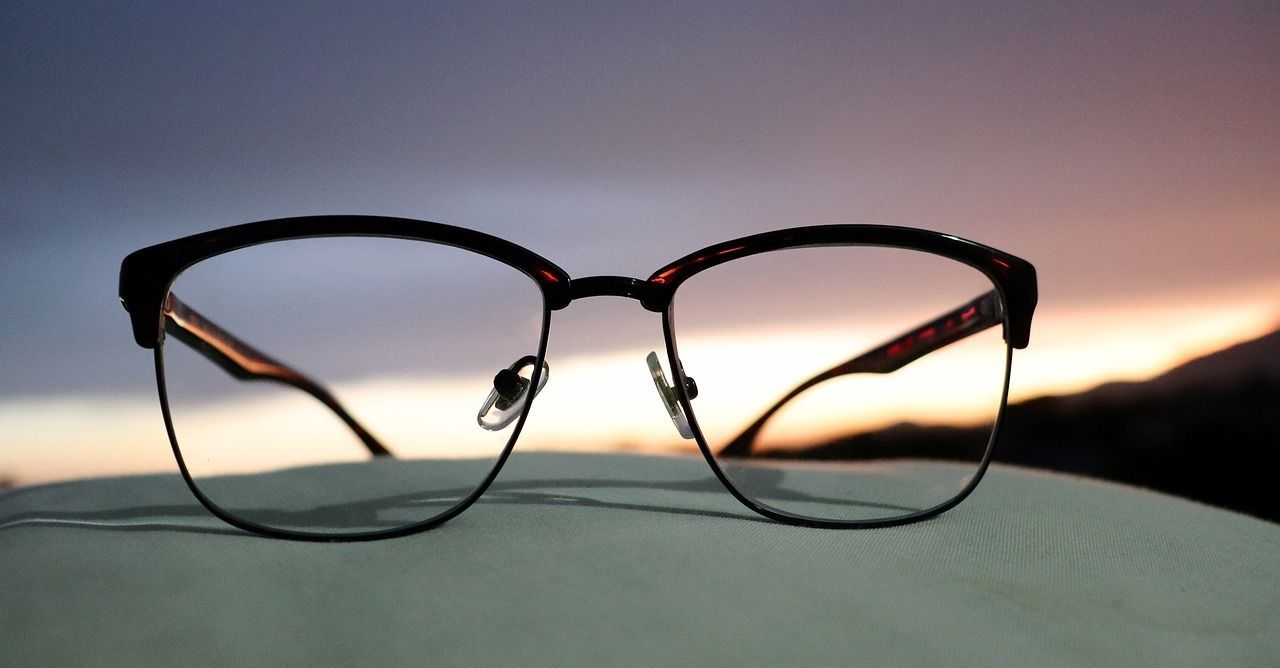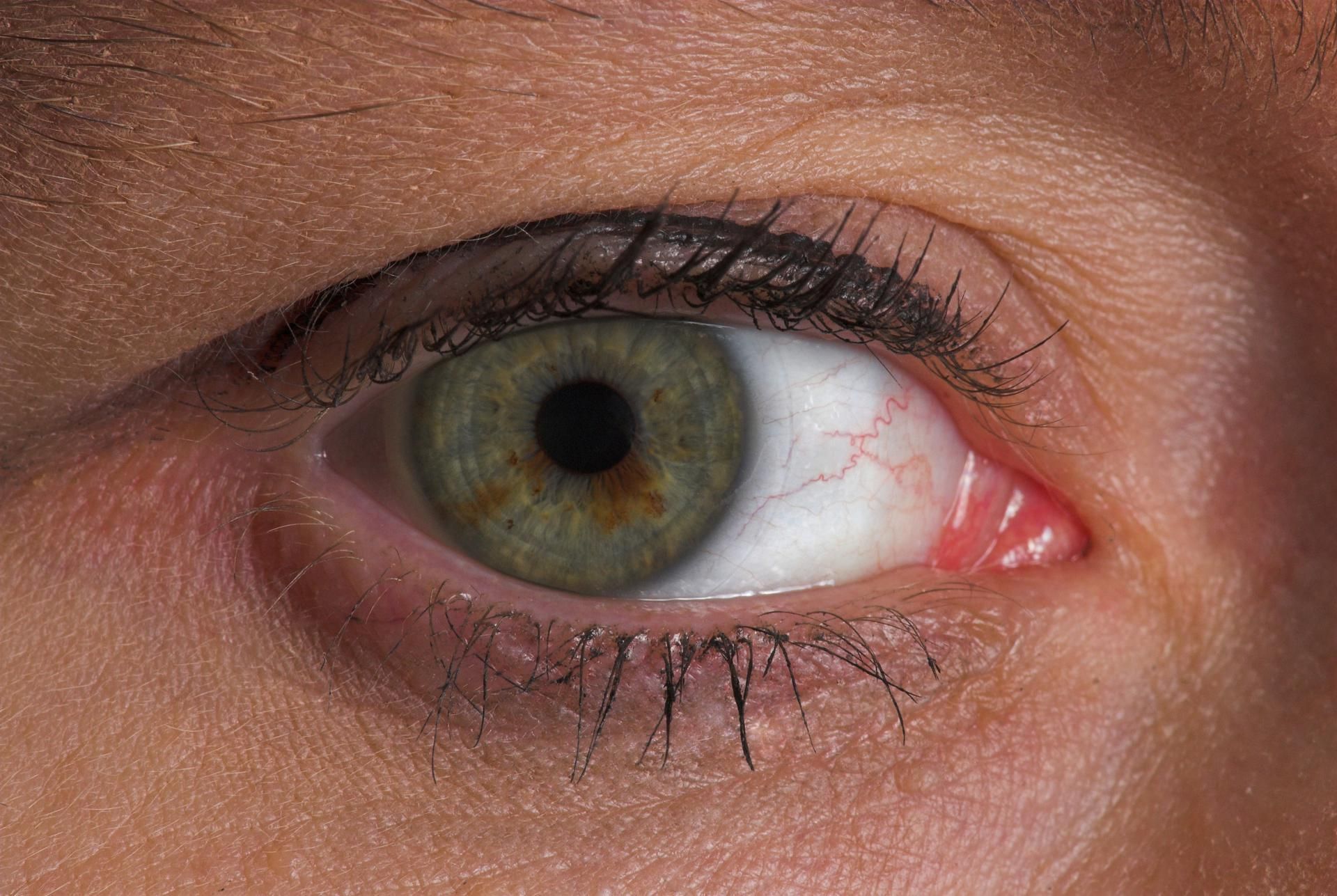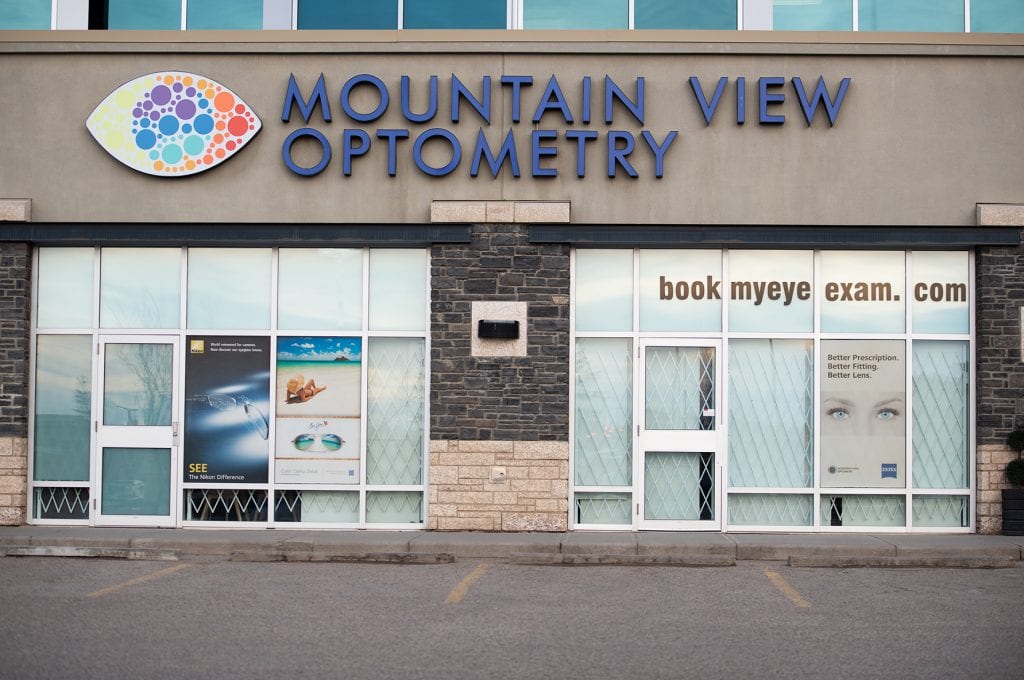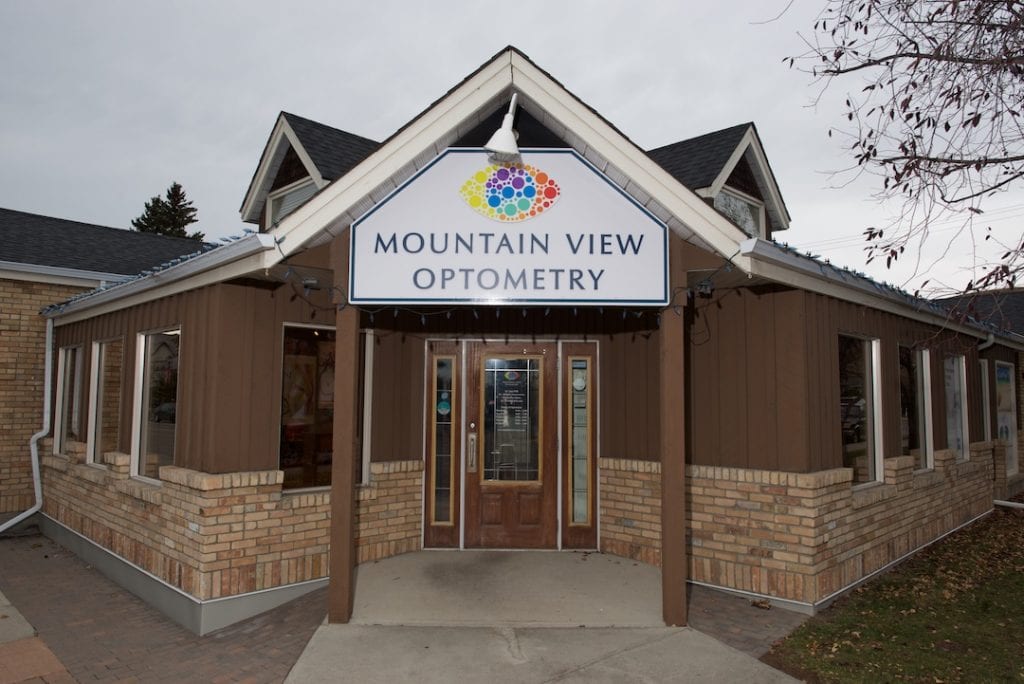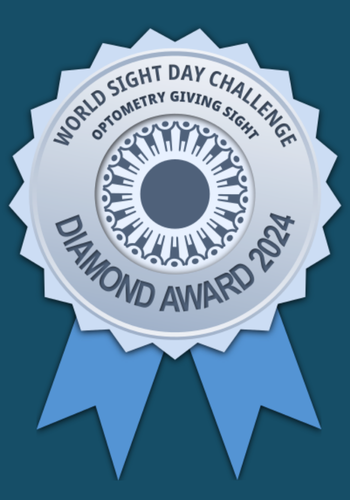New Paragraph
Blog

As a locally owned business, we deeply appreciate your support. Recent events have prompted us to reflect on how many other Canadian companies are also supported when you visit us for eye care services. This month, we are proud to highlight one of our key “Made in Canada” suppliers – ZEISS Vision. Specializing in precision optics, ZEISS spectacle lenses are designed to improve vision in several ways, including sharper vision at night, better contrast, and more natural colours. When you order a set of new ZEISS lenses from MVO, you support a Canadian company employing 250 dedicated staff who work hard to custom build the glasses you will be wearing for (on average) the next two to three years! Thank you for your commitment to keeping your business in Canada!

Visual snow syndrome (VSS) is a condition that causes people to see visual disturbances similar to static on a television. This "visual snow" can be persistent and is often accompanied by other symptoms that can affect daily life. As more people learn about visual snow syndrome, it becomes essential to understand its symptoms, potential causes, and how to manage it.

Discover the latest collection at MVO-Pellicer by Etnia, a family legacy in eyewear that spans three generations. Inspired by Barcelona's cultural heritage, this collection blends innovative designs with top-quality materials like titanium and high-grade Italian acetate for unmatched durability, comfort, and style.
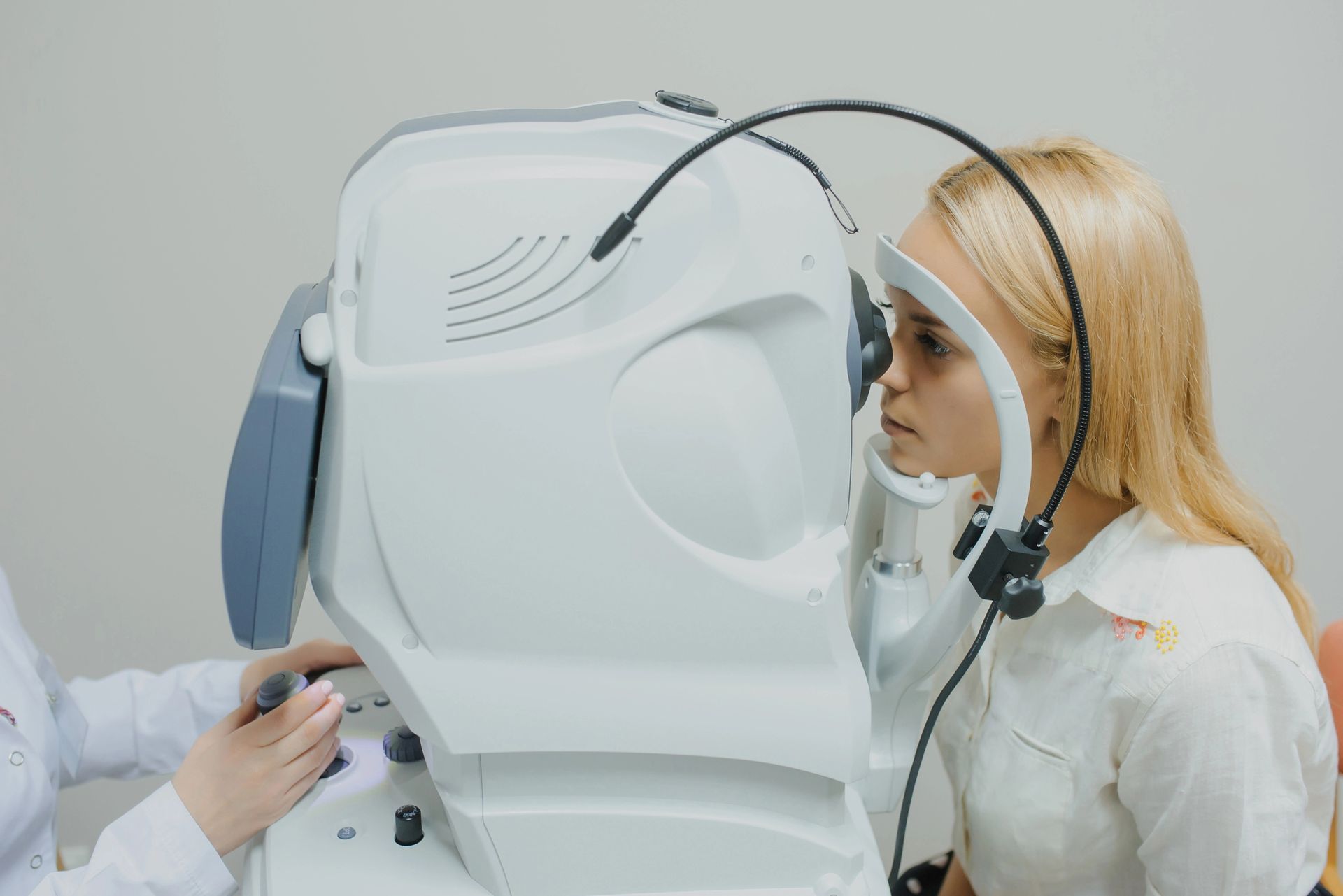
At MVO, we believe that knowledge is key to maintaining your eye health. During your comprehensive eye exam, we perform a variety of tests that may seem complex but are essential for ensuring that your eyes are healthy and your vision is optimal. In this article, we will explain the importance of the advanced technology used at MVO during your eye exam and how it contributes to your overall eye care.

Looking for designer eyewear in Calgary? Mountain View Optometry offers a premium selection of stylish, high-quality frames from top brands like Maui Jim, Gucci, Oakley, Bevel, and more. Whether you need prescription glasses, fashion-forward sunglasses, or sports eyewear for active lifestyles, we have the perfect pair for you.

In recent years, a new surgical procedure has been developed to provide an option for people looking for a permanent change to their eye colour. Keratopigmentation involves the laser-assisted introduction of pigment into the cornea, creating a cosmetic effect that can transform one’s appearance. However, with any medical intervention, it is essential to consider both the potential benefits and risks involved.
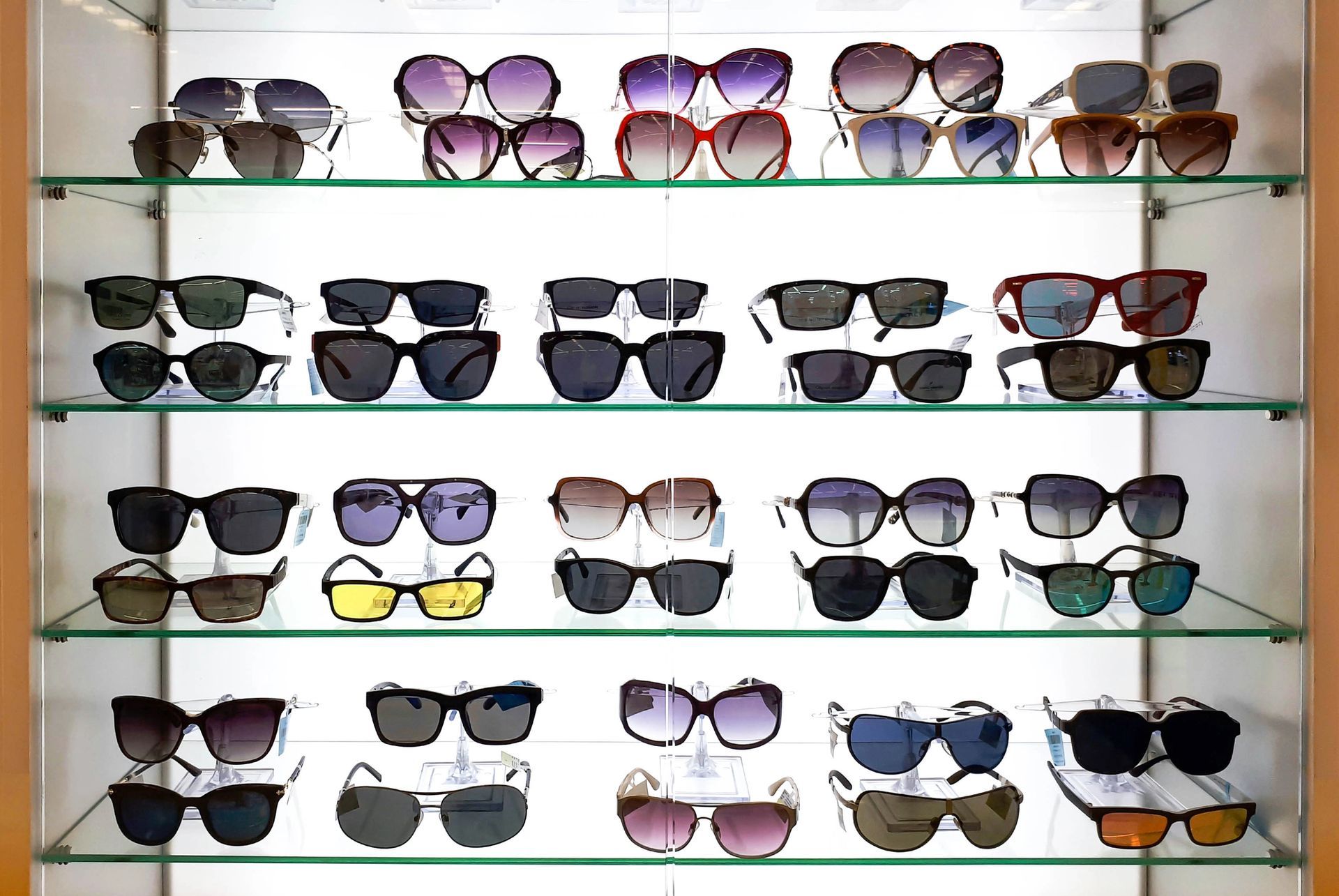
Sunny days are finally here and it’s time to step up your sunglass game! With so many styles, shapes, and brands to choose from, finding the perfect pair of sunglasses can be overwhelming. But fear not, we’re here to help you navigate the wide world of shades and find the perfect pair to suit your face shape, style, and personality – while at the same time protecting your eyes.
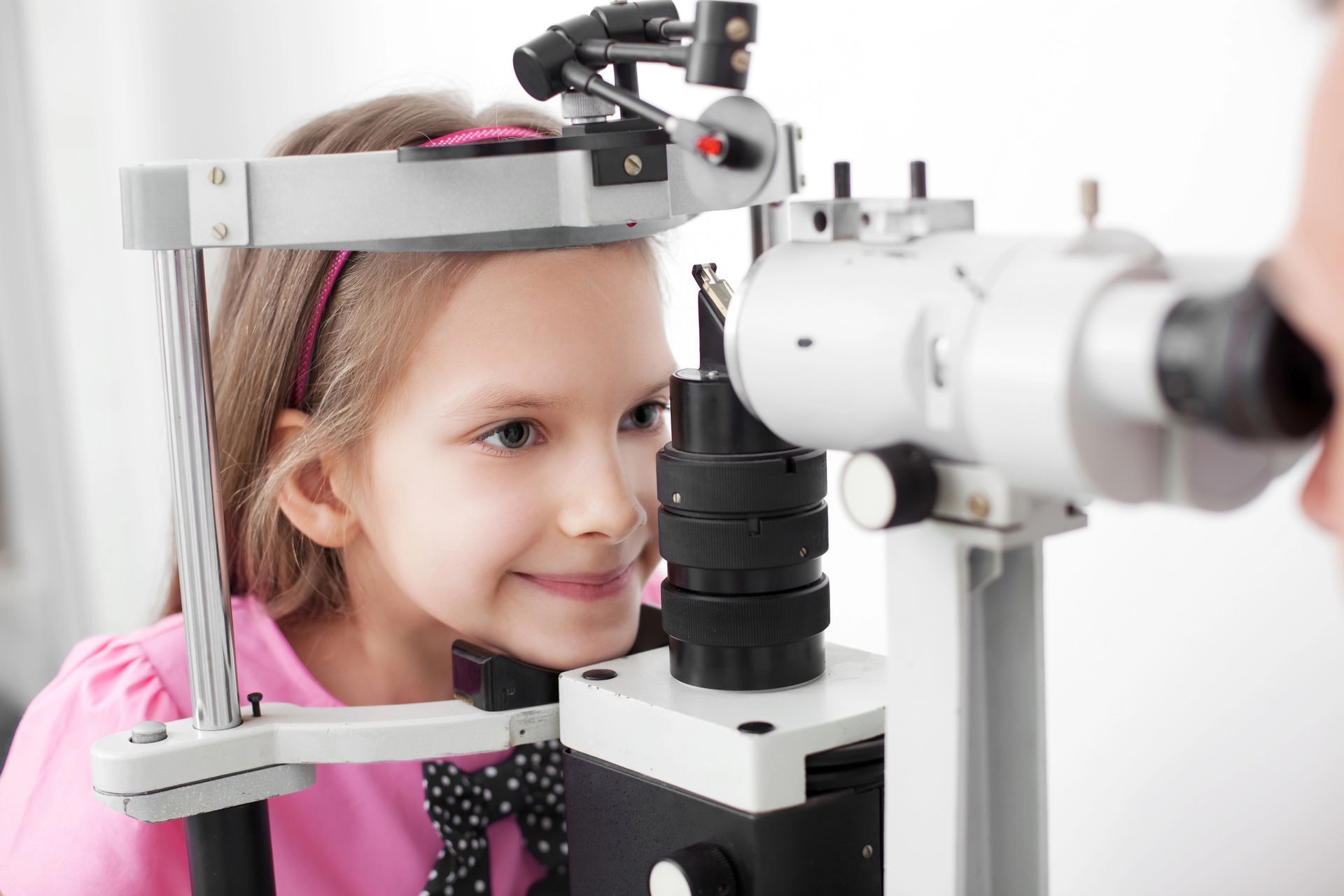
Effective July 1, the cost of a comprehensive eye exam provided to children and seniors at MVO will be: $35 for children $85 for seniors This fee will cover all necessary testing to ensure we can continue to provide you with the best possible care. At MVO we are proud of the elevated standard of care we have provided for over 20 years to the communities of NW Calgary and Cochrane. We value each and every relationship with you, our patients, and look forward to providing you with the experience you deserve for years to come. Thank you, and we look forward to seeing you at your next visit .
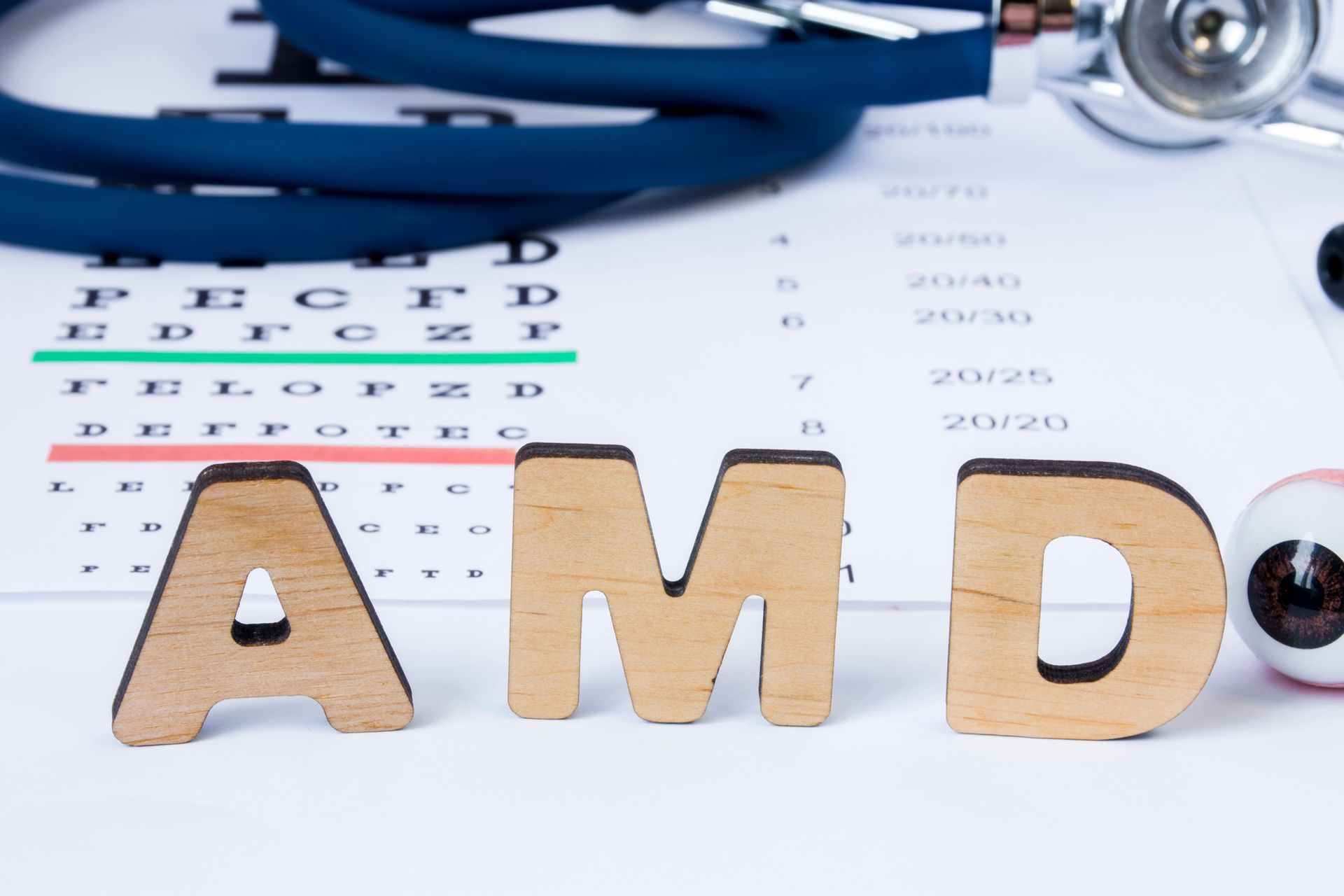
Age-related Macular degeneration (AMD) is a common eye disease that can lead to vision loss. At MVO we are testing a new treatment for the “dry” form of AMD. This therapy is the first clinically-proven, Health Canada-approved treatment to improve the visual function of patients affected by dry AMD. We only have room for a limited number of volunteers for this painless, non-invasive treatment involving a patented microcurrent which is applied through the eyelids for 32 minutes per session. There will be no charge for the treatment sessions if you are selected for the clinical trial. Contact us ASAP if you are interested* by emailing us at [email protected] or calling 403-851-2020. * You must be a current patient of MVO. Not all patients with dry AMD are candidates. You will be screened for suitability and informed if you qualify for the clinical trial

Headaches are a common occurrence for many people, but when they occur behind the eyes, should one be worried? They happen as a result of several different conditions, from the most benign lifestyle or environmental conditions, to serious indicators of underlying health issues, some of which may require medical attention.

Lash extensions are a popular cosmetic option to make eyelashes appear fuller and thicker. They are not without risks, however. If not properly cared for and maintained, they can lead to eye infections and blepharitis . Watch Mavleen, our knowledgeable Dry Eye Technician, discuss her lash extension care routine on Tiktok .

In today’s fast-paced and demanding world, stress has become a constant companion for many of us. From work pressure to personal responsibilities, stress can take a toll on our physical and mental well-being. One area that is often affected by stress is our visual system. In this newsletter article, we will explore the effects of stress on our eyes and discuss ways to mitigate its impact. Stress is a natural response to challenging situations, and in small doses, it can actually be beneficial. It can motivate us to perform better and overcome obstacles. However, chronic or excessive stress can lead to a range of health problems, including eye-related issues. One of the most common eye conditions associated with stress is eye strain. When we are stressed, our bodies tend to tense up, including the muscles around our eyes. This prolonged tension can cause discomfort, headaches, dryness, eyelid muscle twitching, and aching around the eyes. Eye strain can also result from prolonged use of digital devices like computers, smartphones, and tablets. Moreover, excessive stress can disrupt our sleep patterns, leading to chronic fatigue. Lack of quality sleep can further exacerbate eye strain and make our eyes more susceptible to other eye conditions, such as dry eyes and blurry vision. Another way stress affects our eyes is by compromising our immune system. When we are stressed, our body releases stress hormones that can weaken the immune system’s ability to fight off infections and inflammation. This can increase the risk of developing certain eye infections , such as conjunctivitis (pinkeye) or styes. Most people are aware that health conditions like high blood pressure are often worsened by chronic stress. Few are aware of the potential effects of high blood pressure on the delicate blood vessels in the retina (tissue that lines the back of the eyes). When these vessels become compromised, they may leak and cause permanent retinal damage and potentially vision loss. Finally, a condition known as “Central Serous Retinopathy” (CSO) may develop in certain individuals exposed to acute levels of stress. With this condition, small, localized retinal detachments may occur in the part of the eye that processes sharp, detailed central vision. Often CSO resolves on its own without consequence, however, sometimes there may be tissue damage leading to scarring and a degree of permanent loss of clarity. So, how can we protect our eyes from the harmful effects of stress? Here are a few strategies to consider: 1. Practice stress management techniques: Incorporate stress reduction techniques into your daily routine. Deep breathing exercises, meditation, yoga, and regular physical activity can help alleviate stress levels and promote overall well-being. 2. Take regular breaks from digital devices: If your work or lifestyle involves prolonged use of digital devices, make it a point to take regular breaks. Follow the 20-20-20 rule – every 20 minutes, take a 20-second break and focus on something 20 feet away. Ensure proper blinking during digital device use. This can help reduce eye strain and prevent dryness. 3. Prioritize quality sleep: Establish a consistent sleep routine and aim for 7-9 hours of uninterrupted sleep each night. Create a relaxing bedtime routine, avoid screen time before bed, and ensure your sleeping environment is conducive to restful sleep. 4. Use proper ergonomics: When using digital devices or working on a computer, ensure proper ergonomics. Position your monitor at eye level, maintain a comfortable distance from the screen, and use proper lighting to reduce eye strain. Your MVO optometrist can give you more specific advice on this at your next eye exam appointment . 5. Stay hydrated: Drinking an adequate amount of water throughout the day can help prevent dry eyes. Aim for at least 8 glasses of water per day to keep your eyes moisturized. Avoid excessive amounts of caffeine which is known to contribute to higher levels of anxiety and due to its diuretic effect, may also contribute to dry eyes. 6. Visit your MVO optometrist. Schedule regular annual eye exams . We can detect early signs of eye conditions related to stress and provide appropriate treatment or management strategies. In conclusion, stress can have a significant impact on our eyes, increasing our risk for a variety of conditions affecting our vision. By adopting stress management techniques, taking breaks from screens, prioritizing quality sleep, practicing proper ergonomics, staying hydrated, and seeking regular eye care, we can protect our eyes and minimize the effects of stress. Remember, it is crucial to prioritize self-care and work on managing excessive levels of stress for the sake of our vision and our overall health and well-being. Source: https://www.optometrytimes.com/view/stress-can-lead-to-negative-effects-in-the-eye
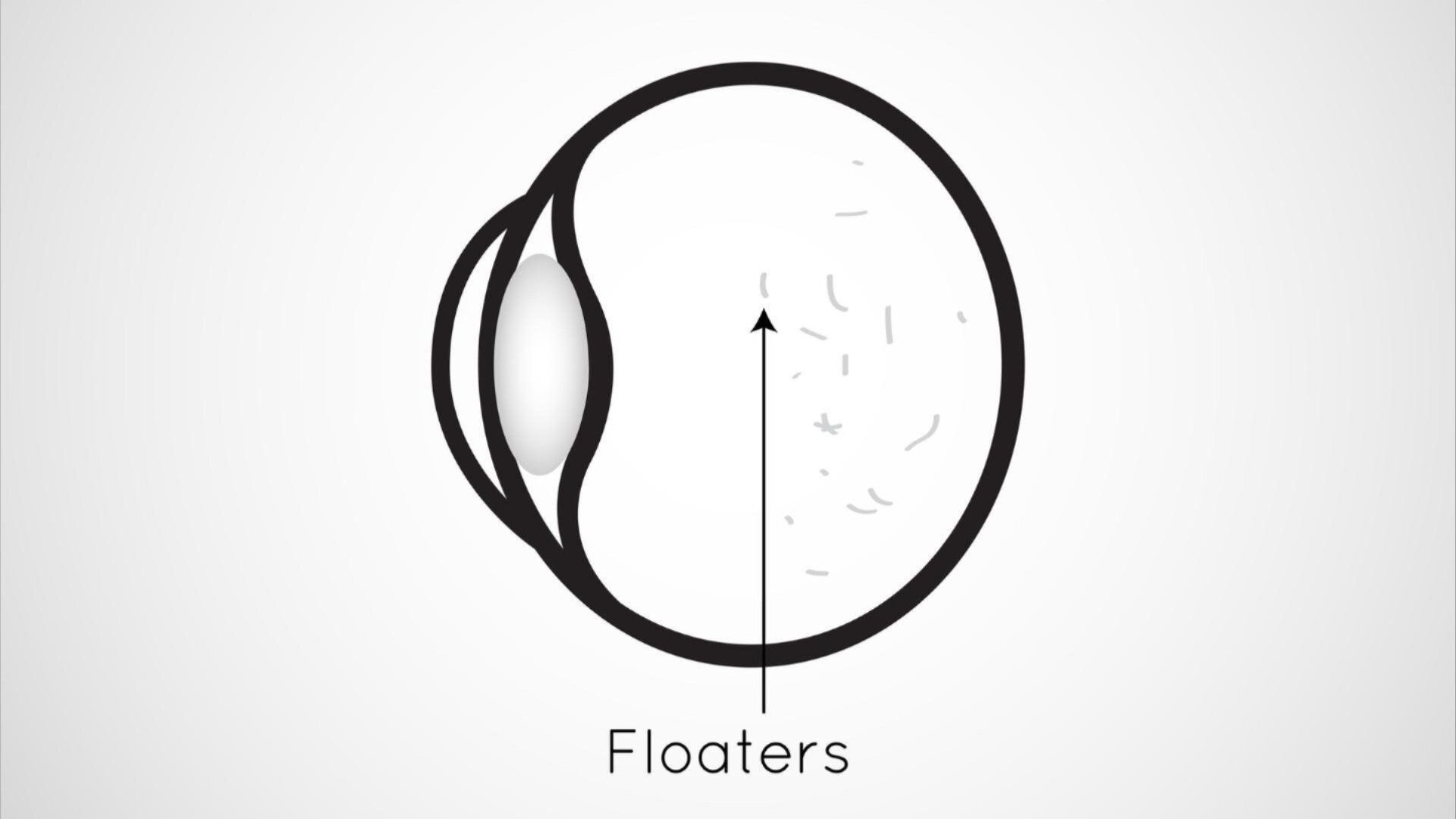
Have you ever noticed tiny specks or cobweb-like shapes drifting across your field of vision? These visual disturbances are known as “eye floaters”, and while most of the time they are harmless, floaters in eyes can sometimes cause concern and anxiety. In this comprehensive guide, we will delve into the world of eye floaters, exploring their causes, symptoms, treatment options, and when to see your optometrist. By understanding the nature of eye floaters, you can gain peace of mind and make informed decisions about your eye health . What are Eye Floaters? Eye floaters are small, dark spots or cobweb-like shapes that appear to float across your vision. They are caused by tiny bits of debris within your eyes that cast shadows on the retina—the light-sensitive tissue at the back of your eye. These floaters may vary in size, shape, and density, and can sometimes be more visible when looking at bright backgrounds or in well-lit settings. Dr. Tom Wilk explaining “floaters”:
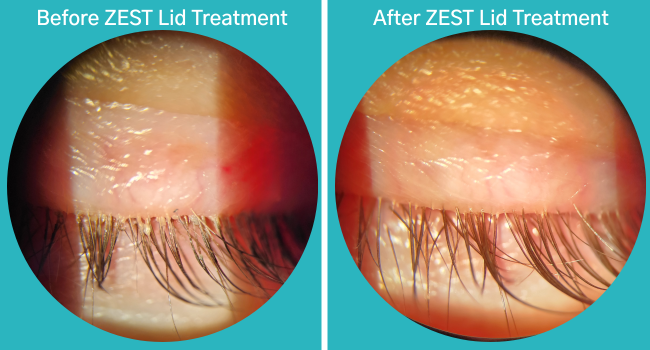
Do your eyes often feel uncomfortable? Most people assume that symptoms of burning, itching, redness, tearing, and scratchiness/grittiness are due to dry eyes. Often, they are surprised when our optometrists diagnose a different condition. “Blepharitis” is an inflammatory disease of the eyelids related to the buildup of debris on the eyelashes and eyelid margins (the edges of the eyelids where the lashes grow from). The debris can come from a variety of sources, including dust in the air, eye makeup, secretions from our own tears and glands within the eyelids, and even a tiny body mite known as Demodex . When this buildup becomes chronic, inflammation ensues and symptoms often develop. Long-term blepharitis may cause chronic infections of the eye, loss of eyelashes and may contribute to dry eye disease . The prevalence of blepharitis has been estimated to be as high as 47% in adults , and may be seen in all age groups including children. The treatment of blepharitis depends on the cause and the severity of symptoms, and may range from the regular use of lash scrubs , medicated eye drops, and in-office therapeutic procedures. Long-term blepharitis can create a stubborn biofilm which can be difficult to remove. One of the most popular new treatments for blepharitis is the ZEST lash cleanser. This is done in-office by our expert technicians. A numbing eye drop is used, and a special solvent is applied to the eyelashes using a technique that is very effective at removing long-term buildup and any pathogens such as bacteria or Demodex. Our patients often comment that their eyes have never looked or felt better once they’ve received a ZEST treatment. This is also a commonly prescribed treatment to do before cataract surgery, to ensure the eyelids and lashes are as clean as possible to avoid any risk of infection during the procedure. We typically prescribe ZEST treatments for blepharitis once every six months, or more frequently depending on the severity of the condition. Your MVO optometrist will be able to review options to manage blepharitis in more detail at your next visit .

The Merriam-Webster dictionary chose “authentic” as the word of the year for 2023. In a world filled with fake news, misleading social media posts, and even Artificial Intelligence, it’s not surprising that people are craving more genuine connections, ethical practices, and interactions with people who care. Beyond the basic transaction of receiving a product or service we paid for, sometimes our experiences fall short of expectations. Digging deeper, it’s often the lack of authenticity that leaves us wanting more. What defines an authentic business? We’ve broken down the substance of what every business should be striving for to achieve true authenticity: 1. A Foundation of Trust: Trust is the bedrock of any successful relationship, and authenticity catalyzes building that trust. Actions and decisions should always be evaluated against the Core Values of a business. 2. Connecting on a Meaningful Level: The relationship with patients and customers is of paramount importance. What matters to you most is the primary focus. Listening with empathy, striving to understand, and taking a genuine interest are all equally important to serve clients most effectively. 3. Embracing a Unique Identity: In a world filled with options, you want a distinctive approach unlike all the rest. How the business delivers the service or product you are seeking makes a difference, as well as the specific features that define a high-quality experience. 4. Community Empowerment: A local business can derive a lot of value from the customers within its influence, and this value should be returned to the community in ways that extend beyond the product or service itself. A conscientious business will actively look at ways to give back. 5. Valuing Feedback: Being authentic means always striving to improve. Listening to customers’ thoughts, perspectives, and opinions helps an authentic business shape its direction and priorities. It also helps it stay agile and responsive to the changing needs of its customers. We recognize you have a choice when it comes to your eye care provider, and we want to express our deepest appreciation for your ongoing support. Our Core Values of Compassion, Protection, and Professionalism were developed with our team and lived each and every day – our doctors and staff are always inspired when they can make a positive difference in someone’s life. We understand that quality means different things to different people. At MVO it means accuracy, precision, technology, performance, fashion, and durability. We promise to bring you products and services that live up to your expectations, without compromise. You’ve helped support our work locally and internationally ensuring that we all benefit from businesses that give back. Our contact lens recycling program, promotion of environmentally safe products and paperless charting system contribute to a healthier environment and a more sustainable future. Thank you for entrusting us with your vision. You are the reason we strive to be the best version of ourselves every day. Together, we can continue to celebrate and support authentic businesses that make a meaningful impact on our lives and the world around us.

An over-active thyroid gland may be caused by a condition known as “Graves disease”. People with Graves disease may develop thyroid eye disease. In this article, we will delve into the causes, symptoms, and available treatments for thyroid eye disease, to increase awareness of this common disorder. Symptoms of Graves and Thyroid Eye Disease Graves disease is an autoimmune condition, where the body’s immune system attacks healthy tissue, resulting in symptoms such as weight loss, shaking, heart palpitations and insomnia. Some people with Graves disease may develop thyroid eye disease, and may experience one or more of the following symptoms: Dry eyes Wide-open eyelids (resulting in a “surprised” expression) Blurred and/or double vision Swelling around the eyes Light sensitivity Redness Eye pain Not everyone will have these symptoms and those that do will have a wide range of severity. Some may even experience permanent loss of vision in extreme cases. Risk Factors and Progression Without treatment there is a risk of progression. Those who have Graves disease and smoke will statistically have a 2 to 8 times greater risk of thyroid eye disease. Even those with low thyroid may eventually develop thyroid eye disease from Graves, and there have been instances where Graves disease has resulted from long-term treatment of hypothyroid with medical therapy. Diagnosis and Treatment Often people with thyroid eye disease will first present to their optometrist’s office with symptoms. MVO optometrists are experienced in identifying when patients may be at risk based on the results of their eye exam. If we suspect thyroid eye disease, we communicate with your family doctor with a request for an endocrinology referral. Diagnosing thyroid eye disease typically involves a comprehensive examination as well as blood tests. There are several treatment options available for thyroid eye disease, and the approach may vary depending on the specific symptoms and severity. Radioactive iodine is considered, which is taken by mouth and causes the thyroid gland to shrink. Other types of medications may be considered as well. Eye issues such as dry eyes may be managed by artificial tears, warm compresses, omega 3 supplements, prescription medications, and more advanced therapy . Double vision may be alleviated by adding a prism correction to the glasses. Those with severe or rapidly progressive issues resulting from thyroid eye disease may require surgical intervention by an ophthalmologist. Thyroid eye disease can have a significant impact on quality of life, particularly if it causes discomfort or impacts one’s appearance. A team approach with a network of health professionals is often required to successfully manage the condition. Proactive support and care will ideally result in early diagnosis and intervention to minimize the impact of thyroid eye disease. If you have a concern that you may be at risk of thyroid eye disease or any other ocular condition, please do not hesitate to contact us to arrange an appointment with one of our skilled and experienced optometrists.
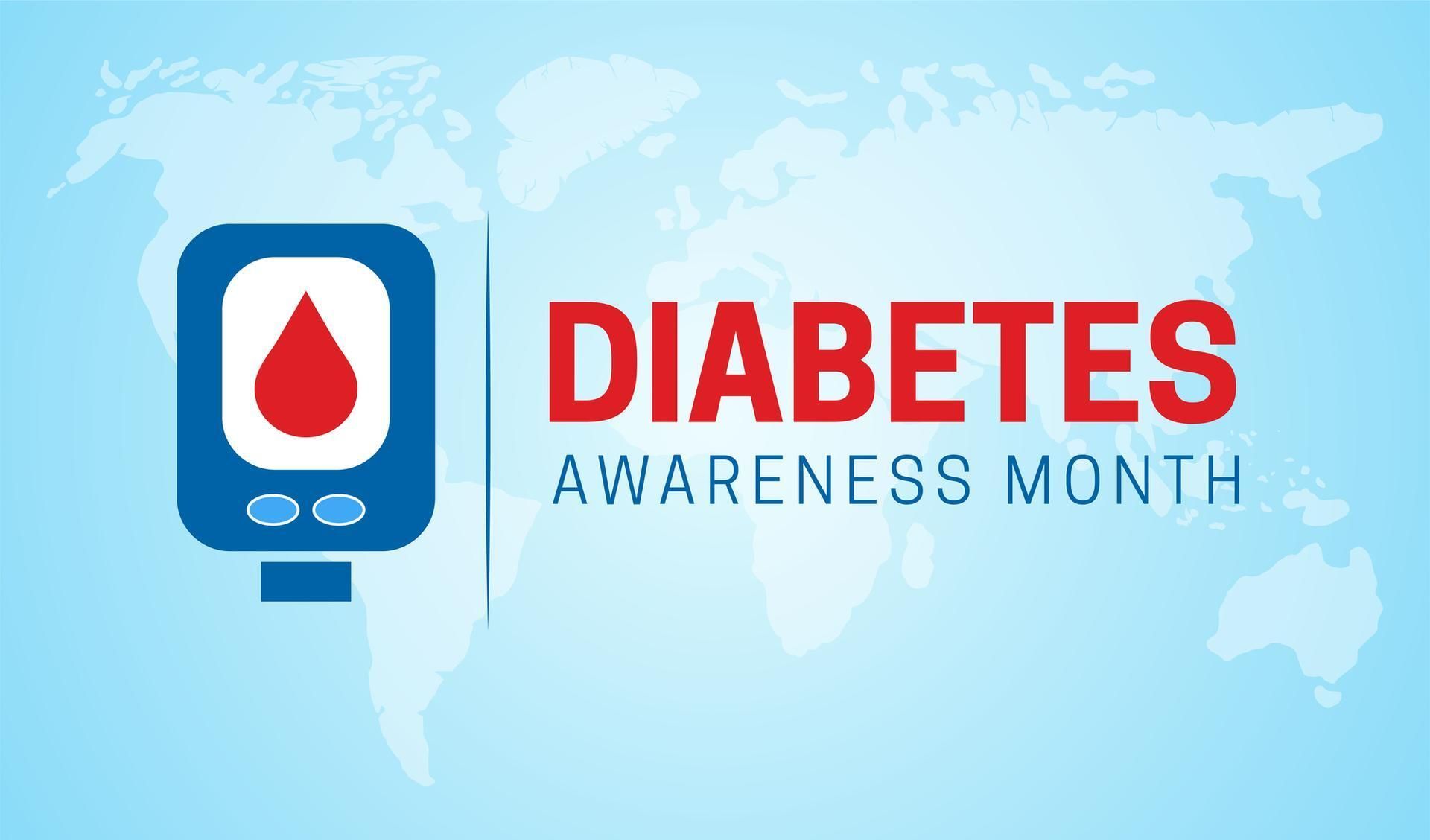
This month we are raising awareness of the potential effects of diabetes on vision. About 9% of the Canadian population 1 is currently living with diabetes, and the rate is increasing. Diabetic Retinopathy is one of the more serious complications of this disease that may lead to permanent vision loss. About 60% of people with Type 2 diabetes (most commonly adult onset) will get diabetic retinopathy within two decades of diagnosis 2 . Most of the time, early diabetic retinopathy causes no symptoms – no change in vision or discomfort – which is why it often goes undiagnosed. Patients may have normal, or “20/20 vision” for years while diabetic retinopathy silently damages the retina. Normal vision may cause some to believe they do not have any problems, and so they may not seek preventive care. Many of our patients have diabetes, and our MVO optometrists are skilled and experienced at picking up the earliest signs of a problem. These are the tests that are conducted: Retina exam : we use Optomap Wide-field imaging which is one of the best ways to obtain a thorough and detailed view of the retina. Our doctors look for signs of leaky blood vessels or more advanced signs of diabetic retinopathy at each visit. Dilation of pupils : usually done annually for most patients with diabetes, when combined with wide-field imaging provides the most comprehensive eye health assessment. Macular OCT : the most sensitive part of the retina often shows subtle signs of swelling or cystic changes that might indicate early diabetic eye disease. This highly detailed cross-sectional scan aids our optometrists in picking up any subtle changes that may occur over time. Maintaining optimal blood sugars through diet, nutrition, exercise, and often medication is crucial in reducing the risk for vision loss from diabetes. Your MVO optometrist is here to help with any questions or concerns. Annual eye exams are an important proactive step in maintaining good overall health, and this is especially important with diabetes. References: Framework for diabetes in Canada - Canada.ca Canadian Life Sciences Database
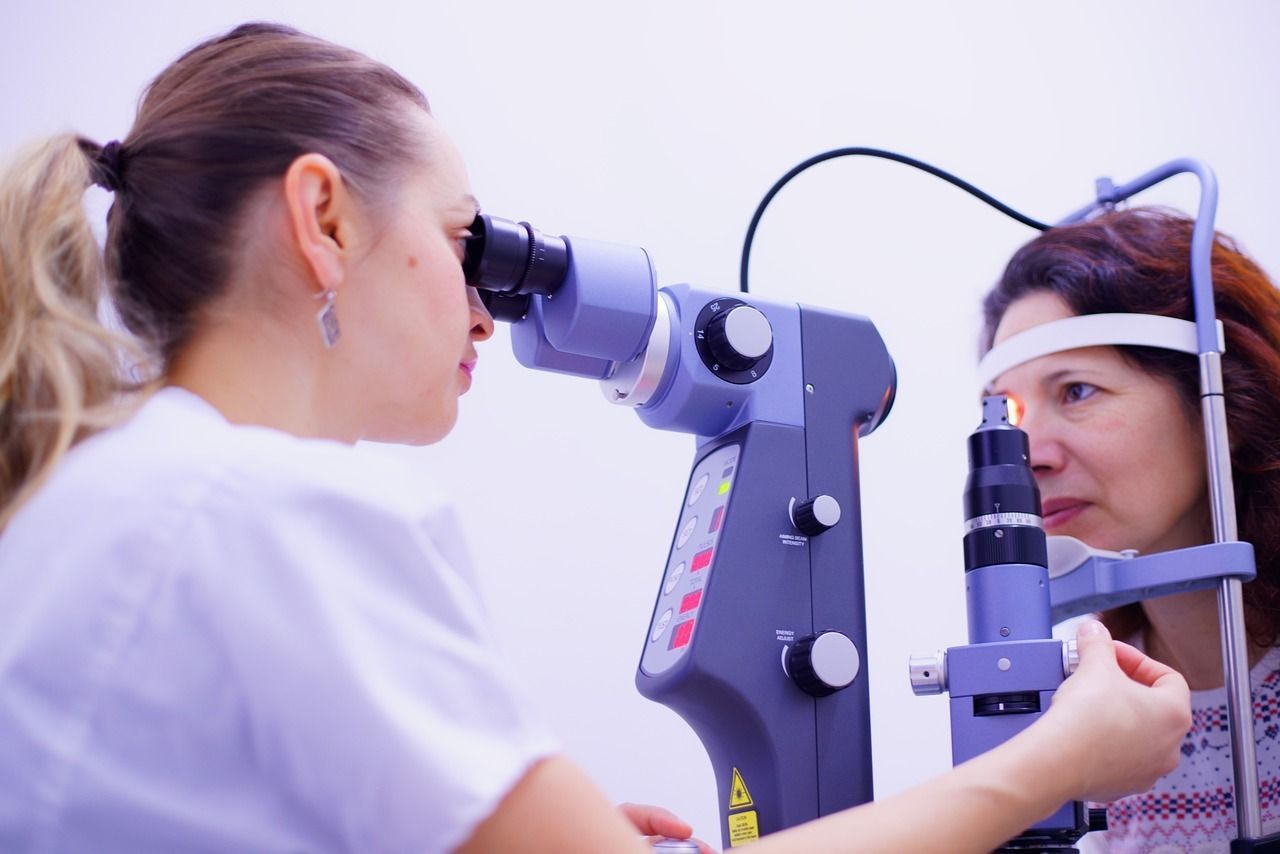
Regular eye examinations are a crucial component of maintaining optimal vision. They not only allow us to detect any potential issues with our eyesight but also provide valuable insights into our overall health. These eye exams can uncover underlying conditions such as diabetes, hypertension, or even neurological disorders. By catching these problems early on, we can take proactive measures to address them and prevent further complications. Yet, despite the undeniable importance of eye exams , some find themselves questioning the cost associated with these services. Why do eye exams sometimes come with a price tag higher than expected? Today, we aim to shed light on this matter, helping you understand the value and importance of this essential healthcare service. Expertise and Care: Firstly, it's essential to recognize that eye examinations are not merely a routine check-up. They involve much more than reading letters from a chart. Eye care professionals invest years of education, training, and experience to become experts in their field. Their expertise allows them to assess your eyes thoroughly, using a range of specialized tools and techniques to evaluate your vision and overall eye health. Furthermore, our eye doctors must continuously update their knowledge and skills to stay at the forefront of advancements in the field. This commitment to ongoing professional development ensures they can provide the best possible care for their patients, incorporating the latest research and technology into their practice. Comprehensive Eye Evaluations: During an eye examination, your optometrist conducts a series of tests and assessments to evaluate various aspects of your visual health. These include measuring visual acuity, assessing the health of the eye structures, checking eye pressure, and evaluating the function of the eye muscles. These comprehensive evaluations can help detect eye conditions and potential underlying health issues early on. The time, expertise, specialized equipment and technology used during eye examinations are not inexpensive, and contribute to the cost of the examination. Commitment to quality and communication: The complexity of each patient visit continues to rise due to the abundance of data from technology innovation. It’s important to take the time to conduct a proper assessment, review the results with patients, and answer any questions. Organizations that charge less may depend on volume to realize a profit, taking shortcuts and causing their patients to feel rushed through the process. Competence Assurance and Standards: Eye care professionals adhere to strict quality assurance measures and industry standards to ensure accurate and reliable results. Maintaining these standards involves ongoing training, certification, and adherence to ethical guidelines. All of these factors contribute to the overall cost of providing high-quality eye care services. Access to Technology and Innovation: Advancements in eye care technology have revolutionized the diagnostic capabilities and treatment options available. Investing in state-of-the-art equipment allows eye care professionals to provide more accurate and efficient assessments. From sophisticated imaging devices to precision instruments, these tools are necessary to assess the intricacies of your eyes and detect any abnormalities or potential issues. The cost of maintaining and upgrading this equipment, along with the associated expenses such as calibration and maintenance, contribute to the overall price of the examination. Additionally, experience and familiarity with new equipment and testing capabilities will vary among providers. Eye Care Insurance Coverage and Professional Fees: Alberta Health Care and private insurance companies often cover part or all of a visit to the eye doctor, depending on factors such as your age, scope of testing, and presenting symptoms. Often, the coverage available is not up to date with the technology used to protect and enhance vision, so a co-payment applies. The cost of eye examinations should be seen as an investment in your health and well-being. Prevention and early detection of eye conditions can help avoid more significant issues down the road and ensure timely intervention. Ensure that you have the trust that your chosen eye care provider will do what’s best for you and your eyes. Fortunately, in Canada there are resources available to help individuals access affordable eye care. Some insurance plans cover routine eye examinations, and government programs or community organizations may provide assistance for those in need. It's worth exploring these options and discussing potential payment plans with your eye care provider. Should you have any concerns or questions about the cost of your eye examination , don't hesitate to engage in an open and honest discussion with our eye doctors and staff at our Calgary or Crowfoot clinics. They can explain the breakdown of the expenses and guide you towards the options that best suit your needs. Schedule an appointment for your Eye Exam .
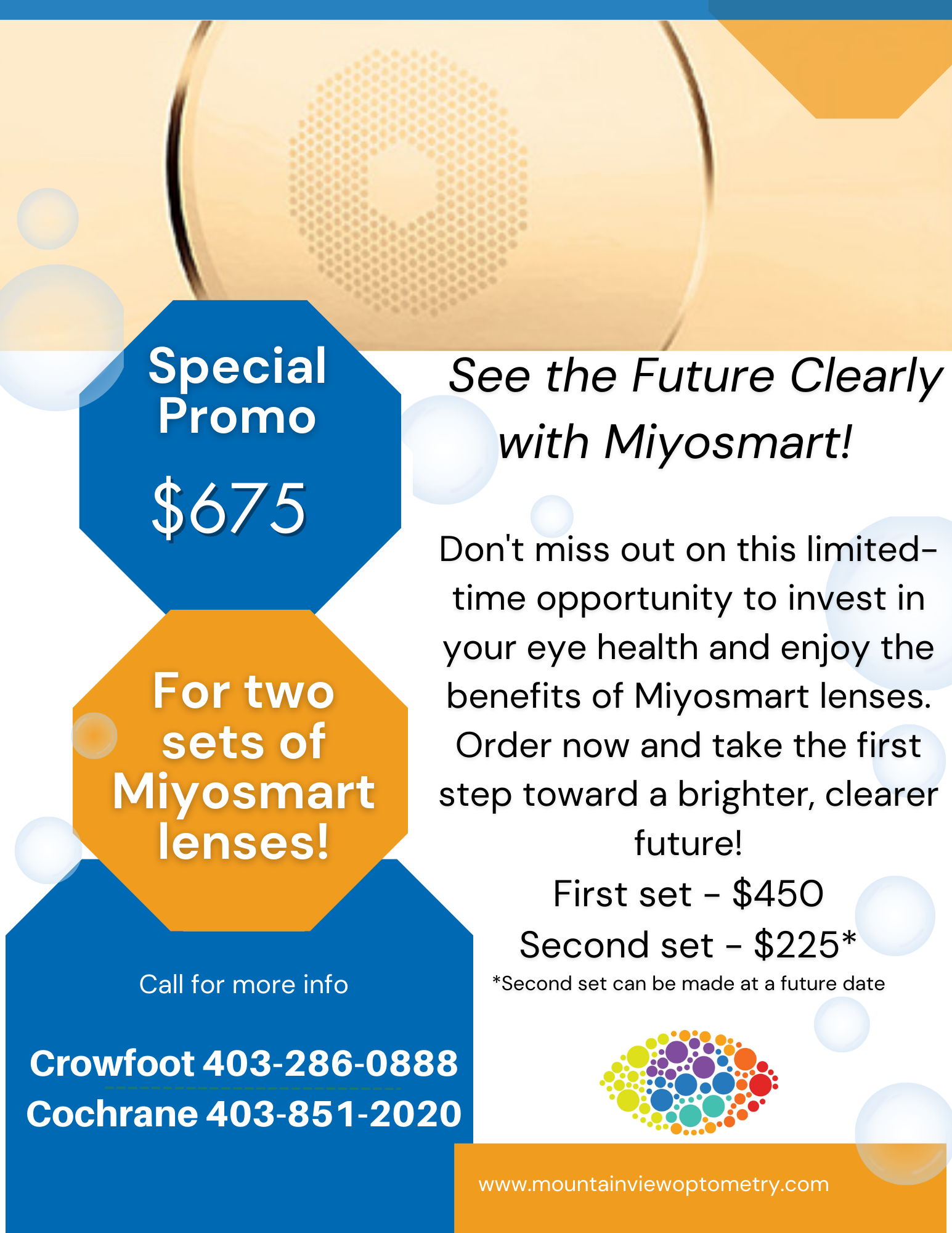
Glasses remain one of the more popular options for correcting vision. For our young patients with progressive myopia we are fortunate to have access to effective therapies, including glasses, to slow down the increase in prescription strength. Our parents with higher levels of myopia (nearsightedness) are often concerned about their children following a similar path. Many are aware of the increased risk for diseases of the eye with higher levels of myopia. In some cases, the disease risk is over ten times higher compared to someone without myopia. One of the more popular options at MVO for myopia control is the HOYA MiYOSMART glasses lens. It incorporates patented DIMS technology which features alternating treatment zones with clear-focus zones in a concentric fashion around the center of the eye. In a series of studies* children who wore these glasses had significantly reduced myopia progression compared to those that wore standard glasses with no myopia-reducing effects. Now, get two pairs of HOYA MiYOSMART lenses** for $675 – over $200 savings! Speak to one of our optical consultants at your next visit for details. * https://bjo.bmj.com/content/104/3/363 , https://bjo.bmj.com/content/106/8/1110 , https://www.nature.com/articles/s41598-023-32700-7#article-info ** for eligible patients under 15 years of age who qualify for myopia therapy based on a consultation with MVO optometrists
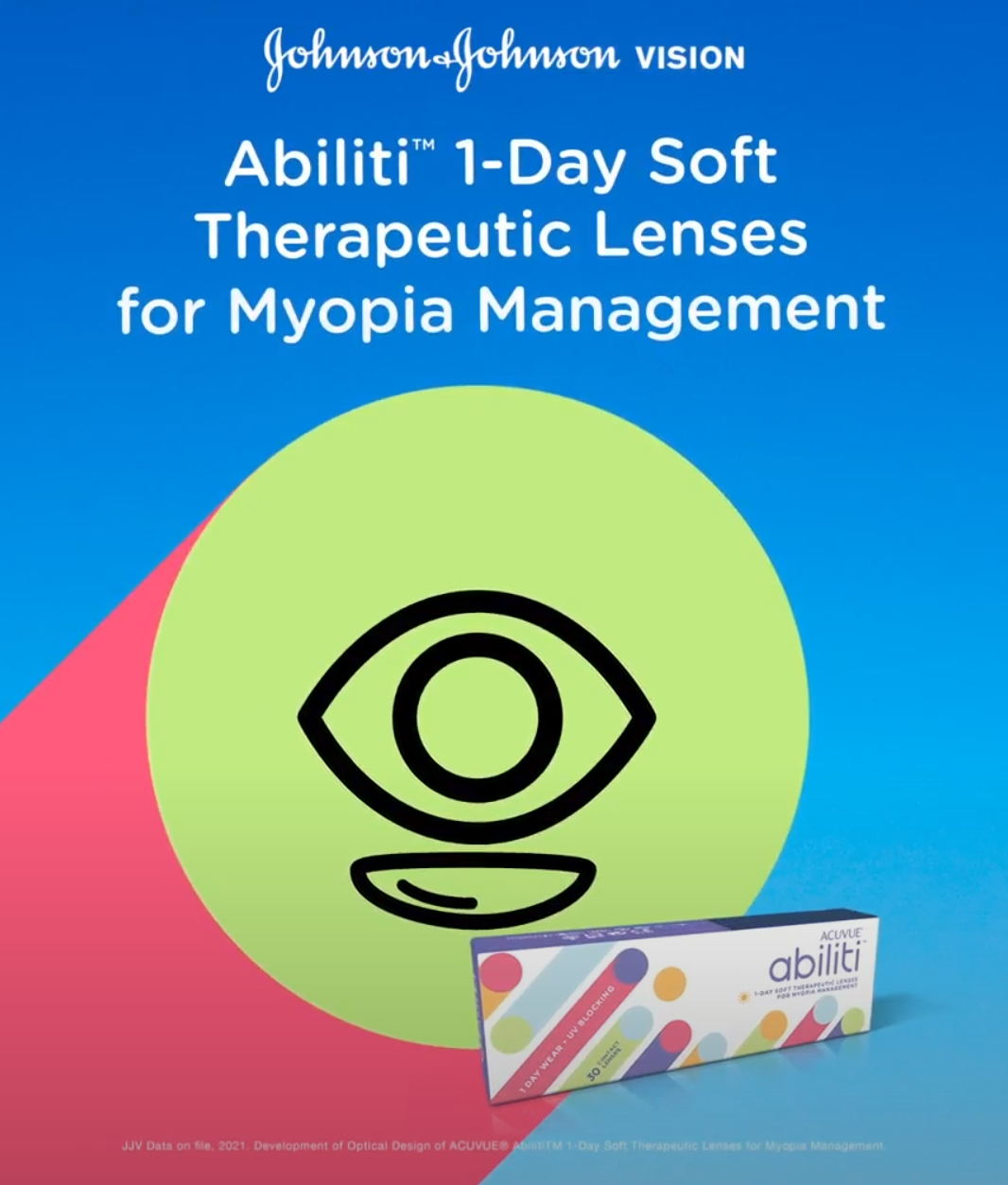
In a blog post from last month we discussed the myopia epidemic, the risk factors, and some of the consequences of this condition if left untreated. Recognizing there is no safe level of myopia, we are excited to offer another treatment option for our pediatric patients. ACUVUE® Abiliti™ 1-day soft therapeutic contact lenses are now available at MVO. They have three unique features: Proven Efficacy : This is the first soft contact lens specifically designed to slow the progression of nearsightedness in children. Studies have shown that it may start to work in as little as 6 months, compared to non-therapeutic standard soft contact lenses. Pediatric Eye-Inspired Design : These contact lenses are slightly smaller in diameter than an adult lens but made from the same comfortable easy-handling material as ACUVUE® Oasys™ 1-day contact lenses – our most popular lens at MVO. RingBoost ™ Technology: This patented design provides the therapeutic myopia-reducing benefit by focusing on light rays entering the eye peripherally (off the line of sight). We are excited to offer this treatment to our young progressive myopia patients who are candidates for this new technology. Our myopia treatments work – we use several evidence-based therapies, many of which can effectively reduce the increase in childhood myopia by 50%. Speak to your MVO Optometrist at your next visit to discover more about which one(s) would be most appropriate for your child.

Does your child say they have trouble seeing the board at school? Or do you notice them squinting to see certain things? Do they already wear glasses so they can see far away? Maybe your child's glasses prescription is changing and you're having to update their glasses frequently. Why is this? And, is there anything that can be done about it? Myopia, or nearsightedness, is an eye condition that affects millions of people across the globe. Myopia is when the light entering the eye focuses in front of, instead of on, the retina. This causes far-away objects to be blurry while up-close objects remain clear. The rate at which people are affected by myopia has been increasing and this includes children. The concern with this is that myopia tends to get worse as a child grows and, with higher myopia, comes a higher risk of eye diseases like glaucoma, cataracts, myopic maculopathy, and retinal detachment. So, what are the risk factors for developing myopia? What can be done to lower the chances of developing myopia or, if your child has myopia, what can be done to slow progression? First, let's look at the risk factors for developing myopia: 1) Genetics: If one, or both, parents have myopia, the chances of their child being myopic increases. There are also some ethnicities that have higher rates of myopia. 2) Too much near work: Near work includes reading, writing, drawing, hand-held games, and electronic devices. 3) Not enough time outside: Spending time outside may delay when a child develops myopia and may slow down the progression in a child who already has myopia. How can you lower the risks ? 1) Regular eye exams: Annual eye exams can help identify risks and concerns early on. A child may not know that there is a problem or be unsure of how to communicate that there is a concern with their eyes. 2) Reduce screen time: Depending on a child's age, recommendations for time on screens can vary. In general, the younger the child, the less they should be exposed to screens, with teens ideally spending less than 2 hours on screen outside of schoolwork. 3) Taking breaks for near work: Short breaks should be taken from near work, whether on screens or not, every 20 minutes to allow the eyes to relax. Good lighting when doing near work and holding the near material at the proper distance are both helpful as well. 4) Spend more time outside: Encouraging time outside, while still wearing sunglasses and hats to give the eyes UV protection, can help delay or slow myopia progression. 5) Myopia control options: Typical glasses and contact lenses can correct the blurry vision that is caused by myopia but they do not help slow down the progression of myopia. The good news is that there are a variety of options to help correct blurry vision and slow down the progression of myopia. Keep an "eye" out for our next newsletter where we will talk more about these myopia control options. Please speak with our Mountain View Optometry team with any myopia questions! - By Dr. Brandea Balcomb

In this era of digitization and increased screen time, maintaining healthy eyesight has never been more important. Our eyes are precious, and it's essential to take proactive measures to keep them in top shape. Whether you spend long hours working on a computer, engaging in outdoor activities, or simply enjoying a good book, here are some valuable tips to maintain optimal eye health: 1. Give your eyes a break: To prevent eye strain, follow the 20-20-20 rule. Every 20 minutes, take a 20-second break and look at something 20 feet away. This quick exercise relaxes the eye muscles and reduces fatigue. 2. Adjust your screen settings: When using digital devices, ensure your screen is positioned slightly below eye level and at a comfortable distance. Adjust the brightness and contrast settings to avoid straining your eyes. Consider using the "night mode" feature or installing blue-light-filtering apps to reduce eye fatigue and improve sleep quality. See Dr. Wilk's video on Computer Vision Syndrome for more information. 3. Stay hydrated: Proper hydration is crucial for eye health. Drink enough water throughout the day to keep your eyes and body hydrated. This helps prevent dry eyes and maintains overall eye moisture. 4. Nourish your eyes with a balanced diet: Incorporate nutrient-rich foods into your meals. Foods high in vitamins C and E, omega-3 fatty acids, and antioxidants can contribute to good eye health. Include leafy greens, colorful fruits and vegetables, fish, nuts, and eggs in your diet to support your vision . 5. Get regular exercise and maintain a healthy weight: Evidence shows that a heart-healthy lifestyle is also conducive to optimum eye health, especially when it comes to avoiding risks associated with age-related eye conditions like macular degeneration. 6. Protect your eyes from the sun's rays: Ultraviolet (UV) radiation can lead to various eye problems, including cataracts and macular degeneration. When venturing outdoors, wear sunglasses that block 100% of UVA and UVB rays. Choose a wide-brimmed hat for additional protection. 7. Take care of your contact lenses: If you wear contact lenses, proper hygiene is critical. Wash your hands thoroughly before inserting or removing them. Follow the recommended cleaning and replacement schedule to prevent infections and maintain eye health. 8. Quit smoking: Smoking is harmful not only to your lungs but also to your eyes. It increases the risk of cataracts, macular degeneration, and other vision-related conditions. Seek support and resources to quit smoking for the sake of your eye health and overall well-being. 9. Visit your MVO optometrist regularly: Regular eye exams are fundamental for early detection and prevention of potential problems. Schedule comprehensive eye examinations once per year, or as advised by your eye care professional. Remember, early detection can help protect your vision. 10. Practice good eye safety: Whether you're playing sports, doing home improvement projects, or working with hazardous materials, wear appropriate protective eyewear. Accidental eye injuries can occur anywhere, and protecting your eyes is critical for maintaining good vision. 11. Get enough restful sleep: Adequate sleep allows your eyes to rest and rejuvenate. Aim for 7-8 hours of quality sleep every night. If you experience persistent sleep problems, consult a healthcare professional, as it may impact your eye health. By incorporating these simple steps into your daily routine, you can take charge of your eye health and prevent potential issues down the line. Remember, healthy eyesight contributes to a better quality of life. Prioritize your vision and take care of those incredible windows to the world. Stay bright-eyed and keep seeing the beauty around you! - Dr. Michele Naruszewicz
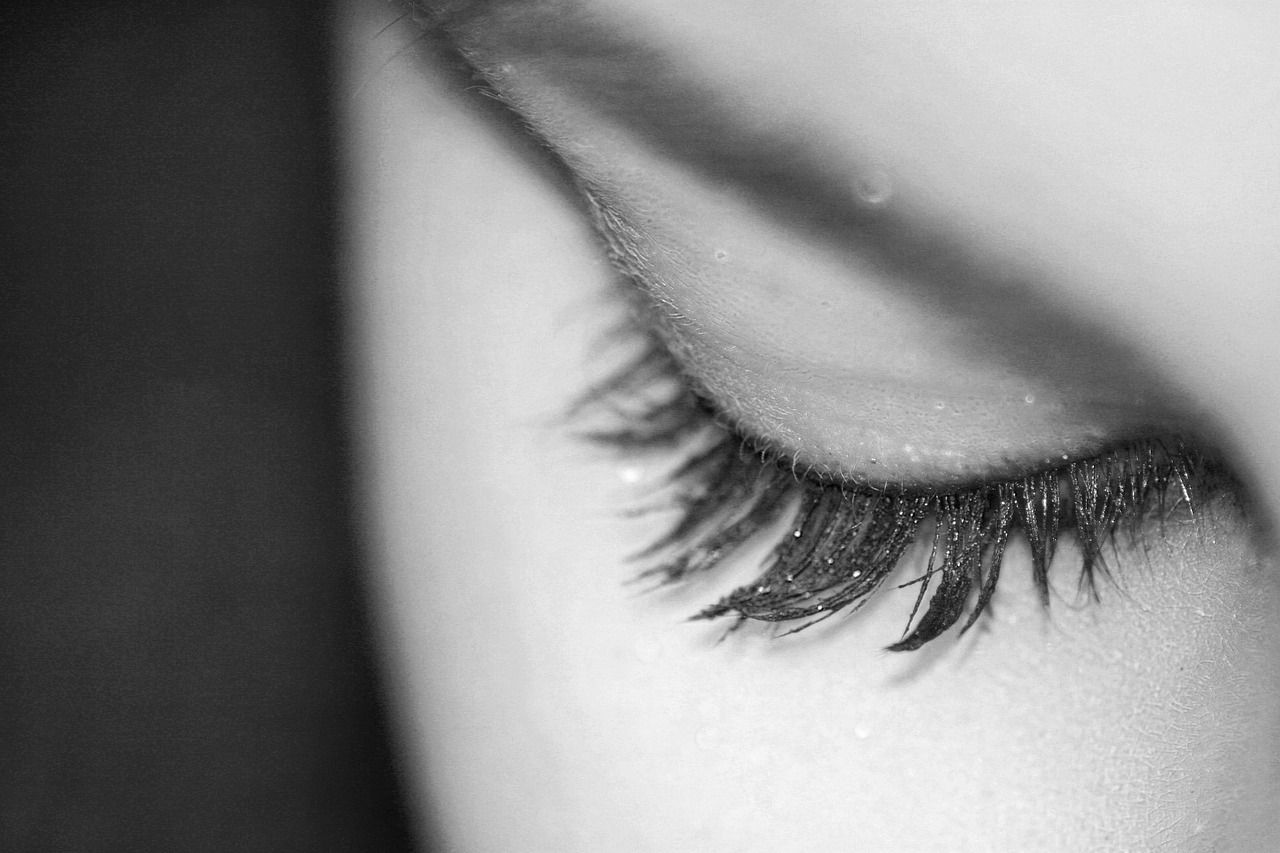
In an age where beauty treatments continue to evolve, a product called Latisse® has gained significant attention. Designed to enhance the length and thickness of eyelashes, Latisse® has sparked both curiosity and debate among those seeking to achieve fuller lash lines. Today, we aim to shed light on the pros and cons of using Latisse® so that you can make an informed decision about whether it's right for you. Pros: 1. Dramatic Lash Transformation: Latisse® has demonstrated remarkable results for many individuals, offering an opportunity to enhance the appearance of eyelashes. Users have reported their lashes appearing longer, darker, and more voluminous after consistent use. 2. Health Canada and FDA-Approved: One major advantage of Latisse® is its approval from Health Canada U.S. Food and Drug Administration (FDA). This signifies that Latisse® has undergone rigorous testing and is considered safe and effective when used as directed. 3. Non-invasive Option: Unlike procedures such as lash extensions or implants, Latisse® is a non-invasive solution. It involves a simple at-home application process, making it more accessible and convenient for those seeking to enhance their lashes. 4. Versatile Uses: While primarily known for eyelash enhancement, Latisse® has also shown potential in treating hypotrichosis, a condition characterized by inadequate eyelash growth. This versatility provides additional benefits to individuals experiencing eyelash-related concerns beyond cosmetic improvements. Cons: 1. Potential Side Effects: Like any product, Latisse® can have side effects. The most commonly reported include redness, itchiness, dry eyes , and darkening of the skin around the eyes. While these effects are often mild and temporary, it's important to consult with your optometrist if you experience any discomfort. 2. Continuous Use Required: Achieving and maintaining the desired results from Latisse® requires dedication and consistency. Once you stop using Latisse®, your eyelashes may gradually return to their original state. This ongoing commitment may not be suitable for everyone. 3. Individual Results May Vary: While Latisse® has produced remarkable results for many, individual responses can differ. Genetic factors, overall health, and lifestyle choices may influence the effectiveness of Latisse® in achieving the desired lash enhancements. 4. Cost Considerations: Latisse® is a prescription product, which means it incurs costs beyond standard cosmetic purchases. The price can vary depending on location and prescription requirements. It's essential to assess the financial implications and determine if it aligns with your budget. In summary, Latisse® offers an enticing possibility for those seeking to enhance their eyelashes. It’s generally safe, non-invasive, and effective, making it an appealing option. However, potential side effects, continuous use requirements, individual variations, and associated costs are factors to consider before deciding. As always, we recommend speaking with your MVO optometrist who can assess your individual needs and provide personalized guidance. They can help weigh the pros and cons, considering your unique circumstances, preferences, and any pre-existing conditions. Remember, beauty is not just about external appearances but also about feeling confident and comfortable in your own skin. Making informed choices is a crucial step toward achieving that goal. Latisse® will soon become available directly from your MVO optometrist! Stay tuned.
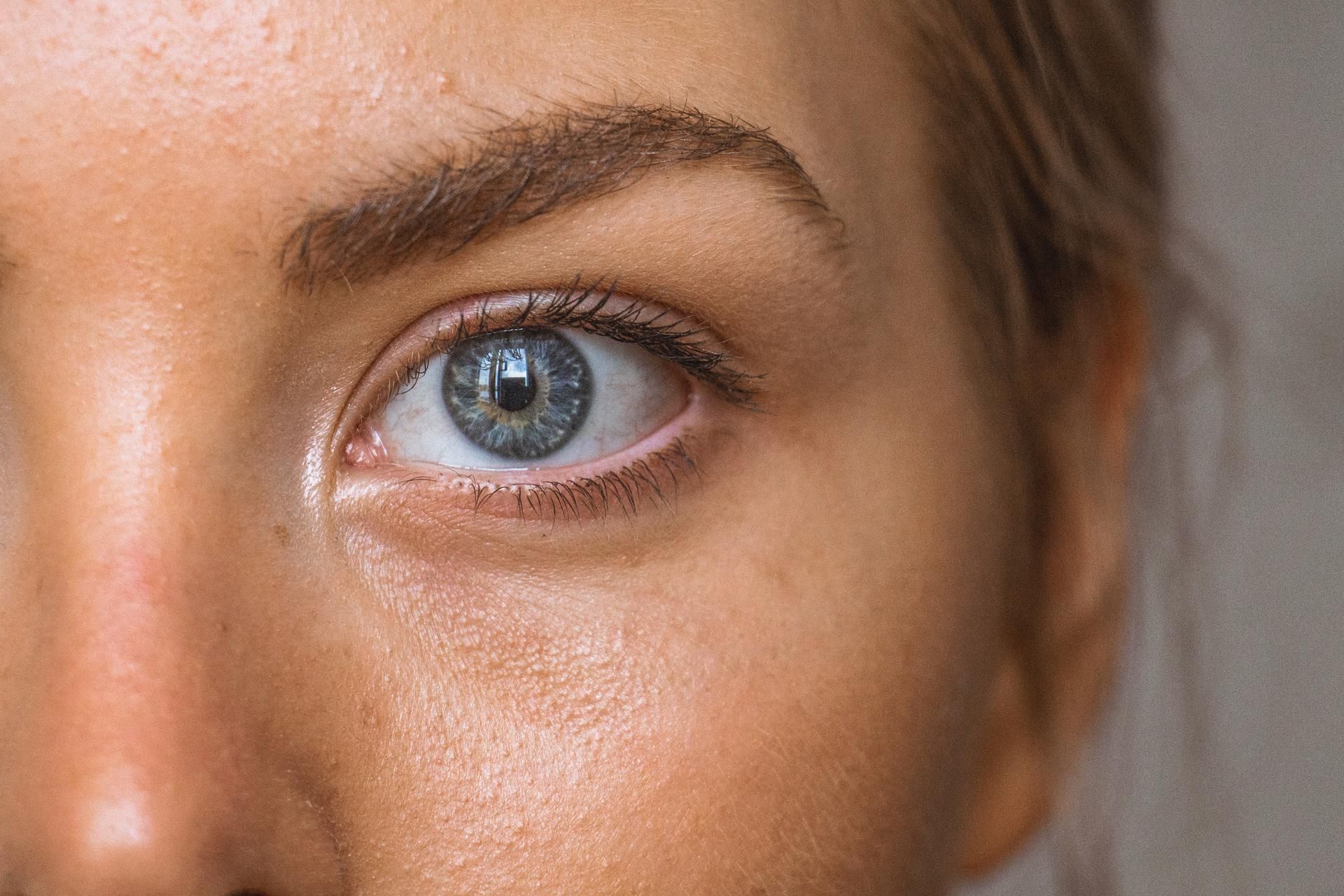
Age-related macular degeneration (AMD) is an eye disease causing vision impairment to the most sensitive area of the retina. It can cause mildly blurred vision in early stages, and more severe forms may result in loss of detailed central vision, making tasks such as reading or identifying facial features difficult or impossible. AMD is a leading cause of vision loss in Canada for those over 55 years of age. For years, there has been a medical treatment available for “wet” AMD. Drugs designed to stop or slow down the formation of damaging blood vessels in the retina have been shown to be effective when the disease is detected early. “Wet” AMD can result in rapid decline of vision and is generally considered the worst form of AMD. However, a form of “dry” AMD known as Geographic Atrophy (GA) can also cause severe vision loss. A new injectable drug called Syfovre has received clearance by the Food and Drug Administration for use in the United States and is awaiting approval in Canada. Research done using Syfovre showed that when injected into the gel of the eye (vitreous) at monthly intervals, the area of cell loss in the retina due to Geographic Atrophy was reduced by 22%. When retinal cell death is detected from GA in areas adjacent to the most sensitive part of the macula known as the fovea, early intervention using Syfovre can prevent the most severe consequences of progressive dry macular degeneration. A marketing application for the use of Syfovre in Canada is underway, with approval hopefully within the next year or two. Reference: https://www.fightingblindness.org/research/apellis-syfovre-279
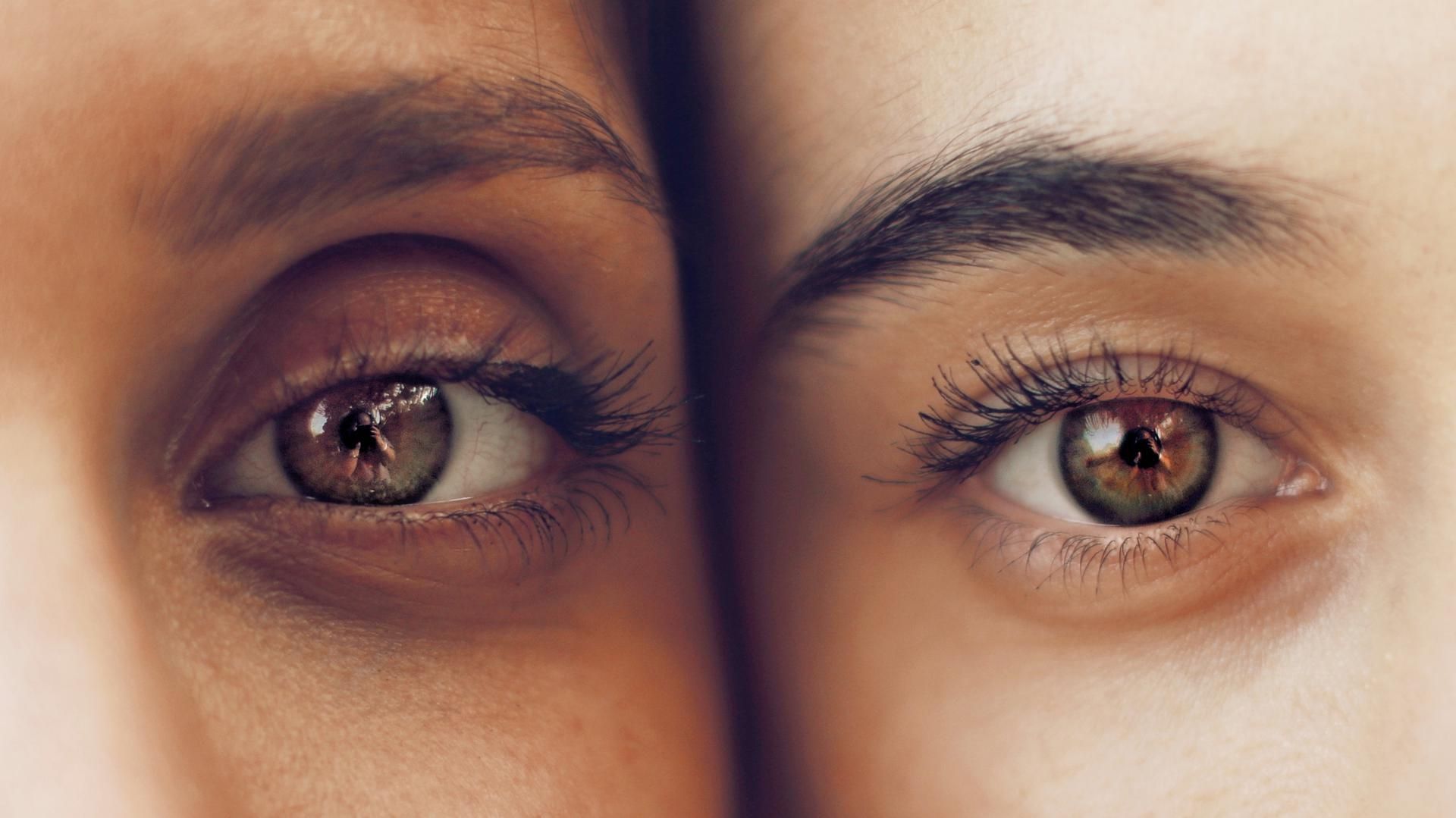
A campaign by Prevent Blindness has been launched to educate on the importance of properly diagnosing and treating dry eye disease. Few people are aware that dry eye disease may lead to vision problems in the most severe cases. Early detection and management are the keys to slowing down the progress of dry eye disease and improving symptoms. Risk factors for dry eye disease include: Frequent use of digital devices (phones, tablets, computers) Medications History of eye surgery (LASIK, cataract surgery, and others) Living in a dry climate Contact lens wear Age (dry eye worsens with increasing age) Medications and medical conditions (diabetes, arthritis, auto-immune conditions Skin conditions such as rosacea Inflammatory conditions of the eyelids Fortunately, we have many therapy options for dry eye disease. Three of our MVO doctors have a special interest in dry eye and would be pleased to give you advice at your next eye exam . Take this 1 minute questionnaire to see if you are at risk for dry eye disease.
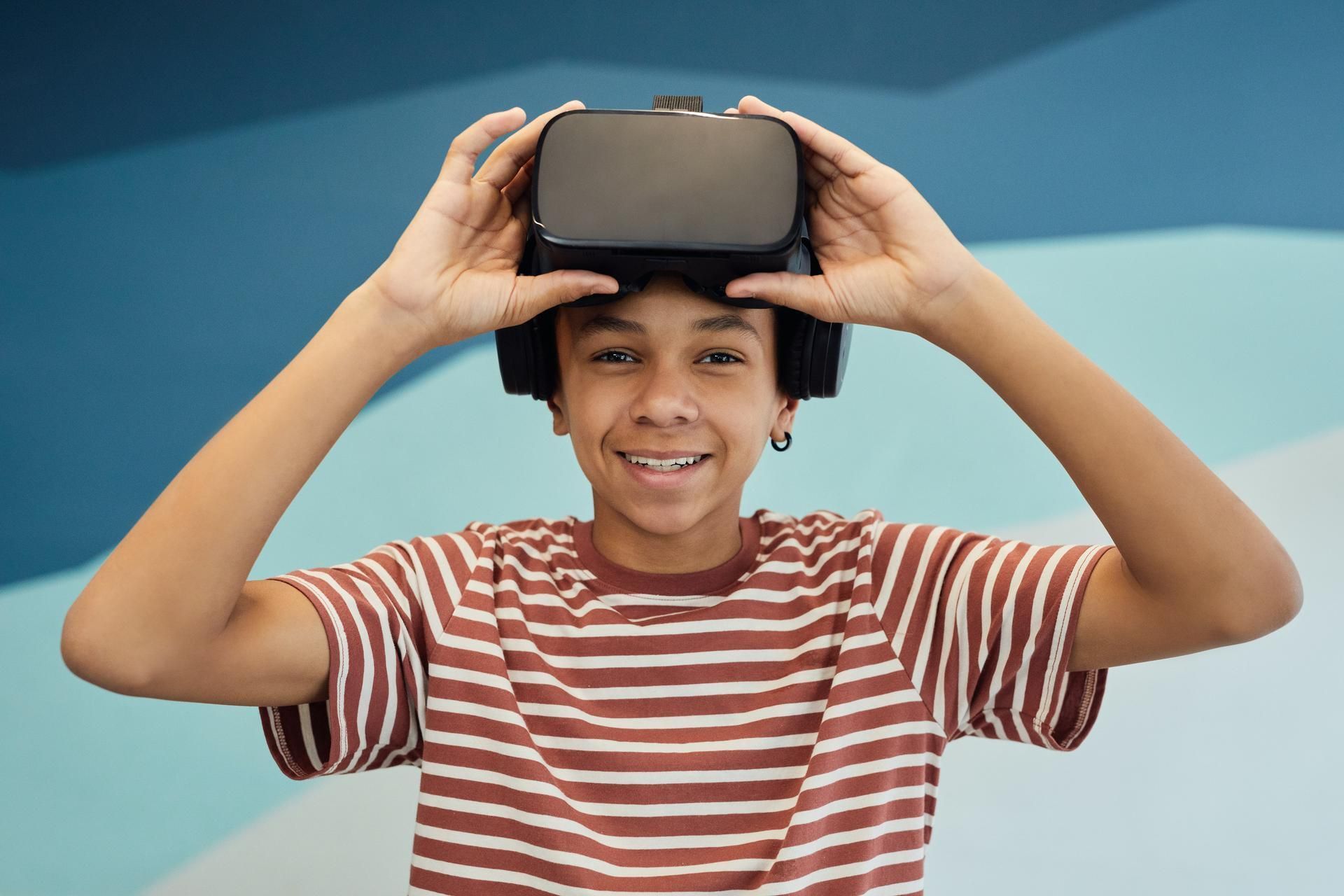
As VR (Virtual Reality) headsets become more and more popular, their use is rising across all age groups. How do these devices affect the developing visual system in young people? The companies who are involved in VR headset research and design have varying recommendations about the minimum age for safe use of their devices. While most manufacturers have set the minimum age for use of their VR headsets at 13, others have said they would drop this to 10 . What is the right answer for safe VR headset use among children? There are a few different concerns about using a computerized device to “trick” our visual processing systems to see objects in three dimensions in an artificially generated environment. One has to do with the way our focusing and eye-teaming systems work together. In virtual reality, these two systems are purposefully separated. This has caused temporary blurring and balance problems after a short 20-minute VR session, according to one study . The ethical problems with conducting a longer-term study on children mean that, for the time being, we simply do not know what the effects might be. A second issue has to do with the development of myopia (nearsightedness). We know that extensive screen time, as well as reduced time spent outdoors, leads to earlier and more rapid onset of myopia. VR screens are even closer to the eyes than other digital devices, so the potential impacts could be more severe. More data is needed. Lastly, what are the psychological consequences of immersing young minds in environments that distort reality? Very little research has been done. At MVO our optometrists do not recommend the use of VR devices for children younger than 13. Excessive use should be avoided even when age-appropriate, and further modified if there are risk factors for myopia or other vision problems detected during an eye exam. Book your children’s eye exams today to get specific advice on the use of VR headsets and any other questions you may have. Reference: Are VR headsets really safe for young children? | Evening Standard

Nearly all of us now wear sunglasses on a regular basis. Who invented them? Their use dates to prehistoric times, where the very first evidence of something resembling sunglasses was found in ancient artifacts – masks made of bone with narrow slits carved into them. The Inuit wore these masks to limit the amount of sunlight entering their eyes and to provide them with sharper vision while hunting.

Disney is one of the world’s top companies when it comes to creating outstanding customer experiences. As this is also one of our passions at MVO, our team was excited to learn from the professionals at the Disney Institute over a 2-day training session in downtown Calgary. We can’t wait to show you what we learned! Thanks to our partners at Eye Recommend for putting on such a fantastic event.

On Saturday June 10, a group of us from MVO joined with Eye Recommend at the Calgary airport to pull a 60-ton FedEx 757 cargo airplane 20 feet across the tarmac! Yes, you read that right. As part of a fundraising drive for Orbis, our team raised over $3,800.00 for the Plane Pull for Sight . Orbis is a global charity that combats avoidable blindness in developing countries across the world. You can read more about Orbis and their great work on Avoidable Blindness . Thanks to all our wonderful supporters who donated to our team members for this cause!
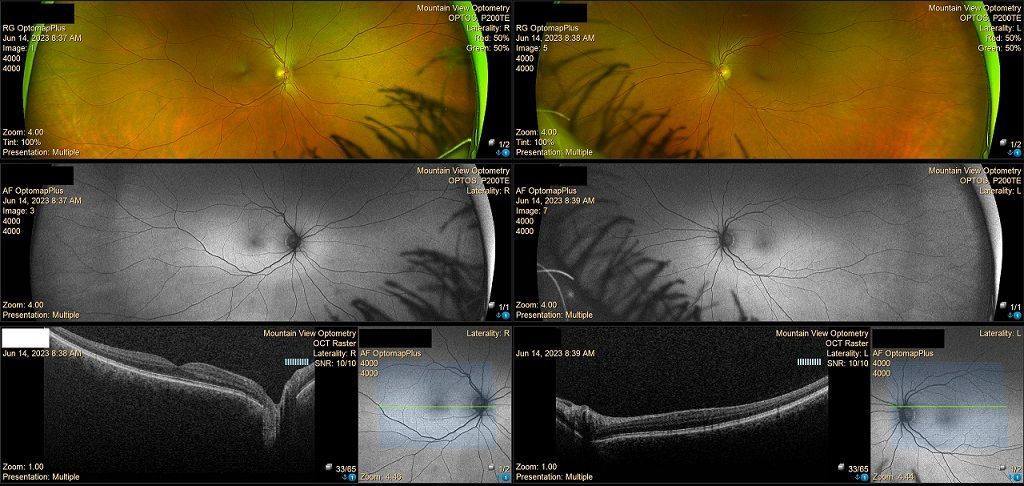
Again, we’ve upped our game to bring you the latest in eye care technology. Most of you are familiar with the Optos Retinal Exam which has enabled our doctors to pick up the earliest signs of eye disease in the back of the eye. Recently, we have upgraded to the Optos Monaco at both our locations. In addition to a wide-field image, the Monaco provides ultra-detailed multi-layer images of your macula (the most sensitive part of your retina) and optic nerve. These images help your eye doctor find problems beneath the surface before they are even visible on a conventional digital photograph. Early detection of eye disease is one of our key objectives at MVO to help protect your vision for life. Book an eye examination and experience the latest in eye care technology.

Concerns about “blue light” have risen with the amount of exposure to electronic screens – computers, phones, and tablets. “Blue light” is a type of light emitted by digital devices but is also produced by sunlight. It’s close to UV (ultraviolet) in wavelength, which is known to cause harmful effects like cataracts and macular degeneration.

